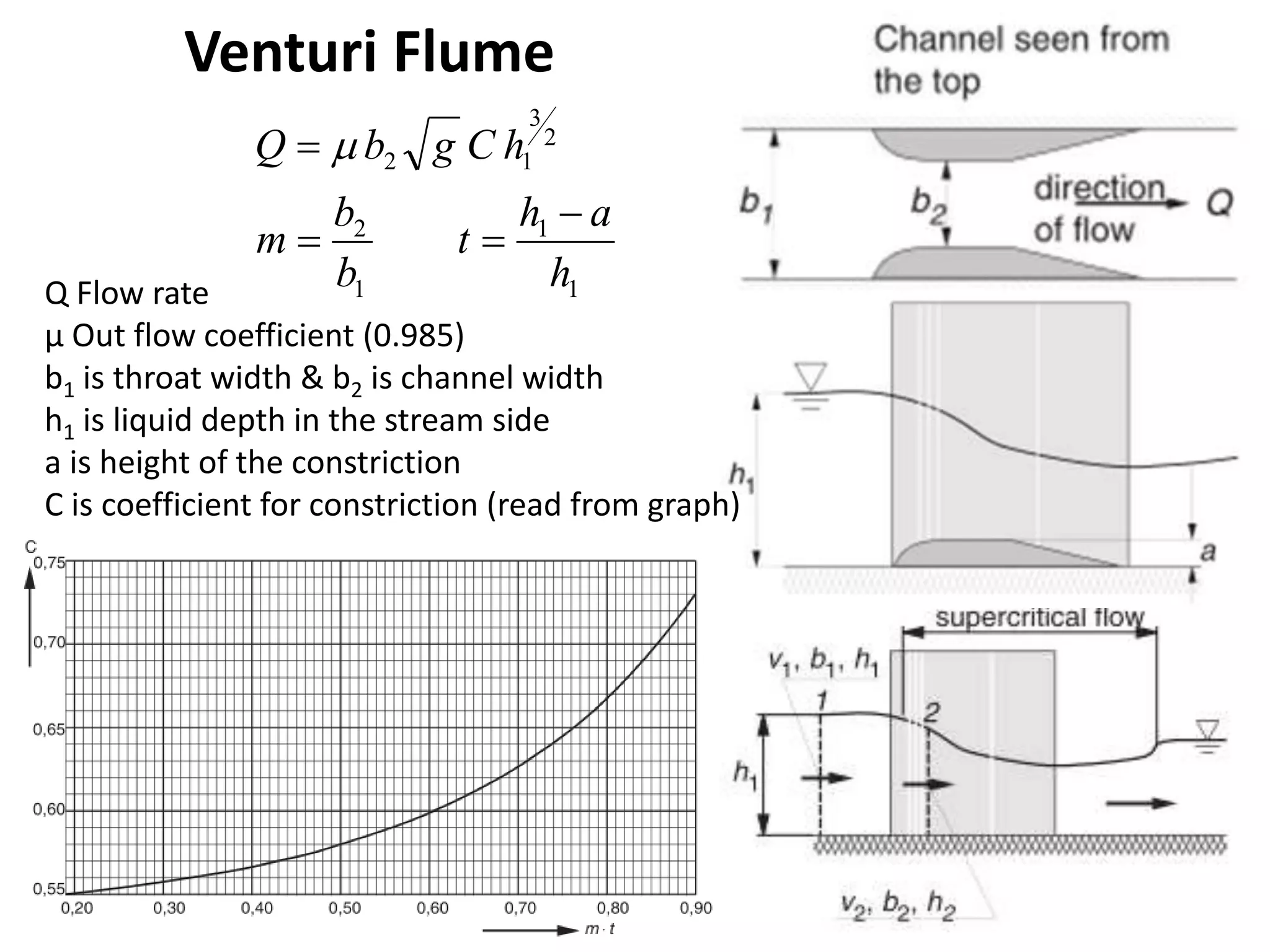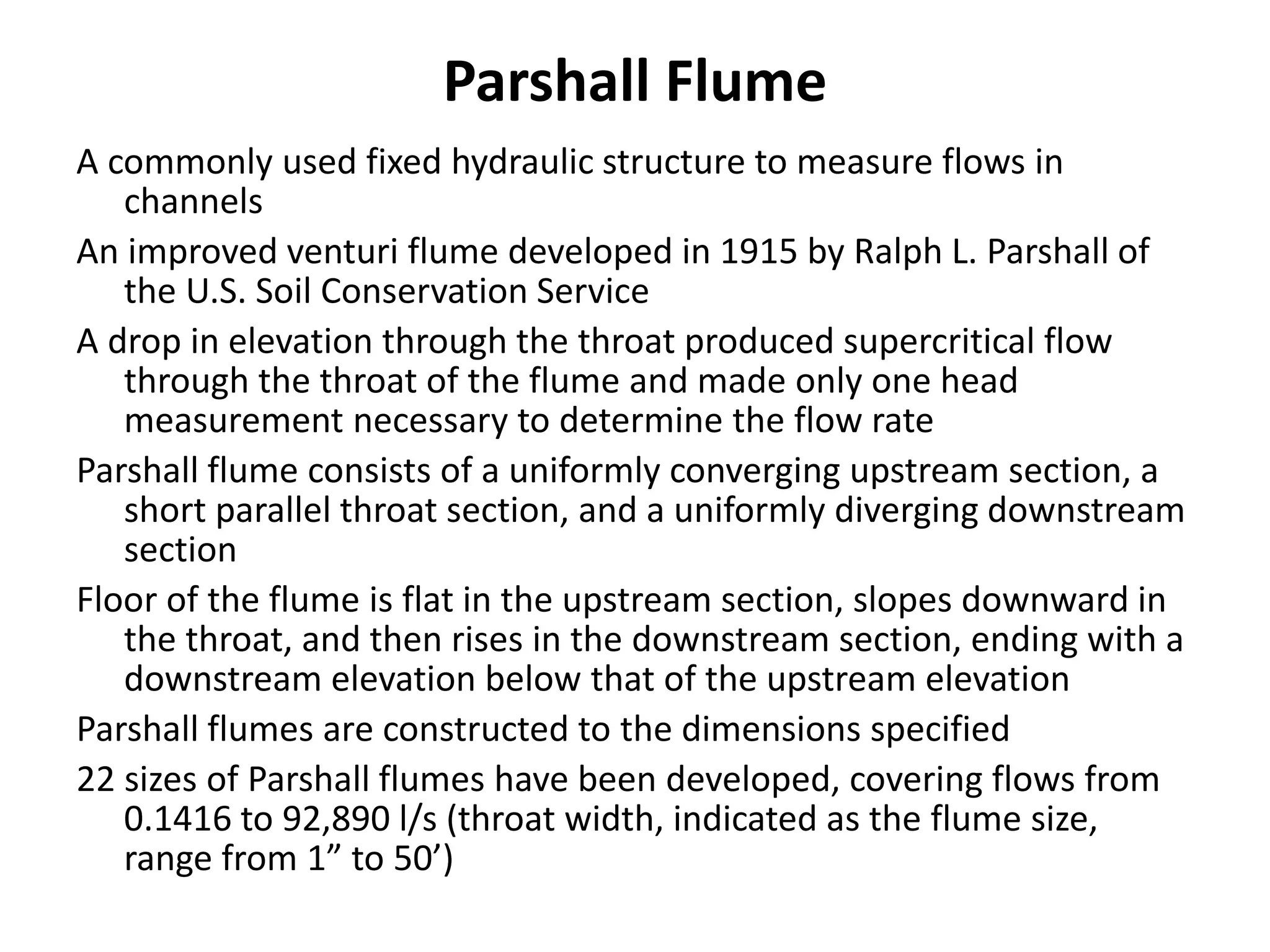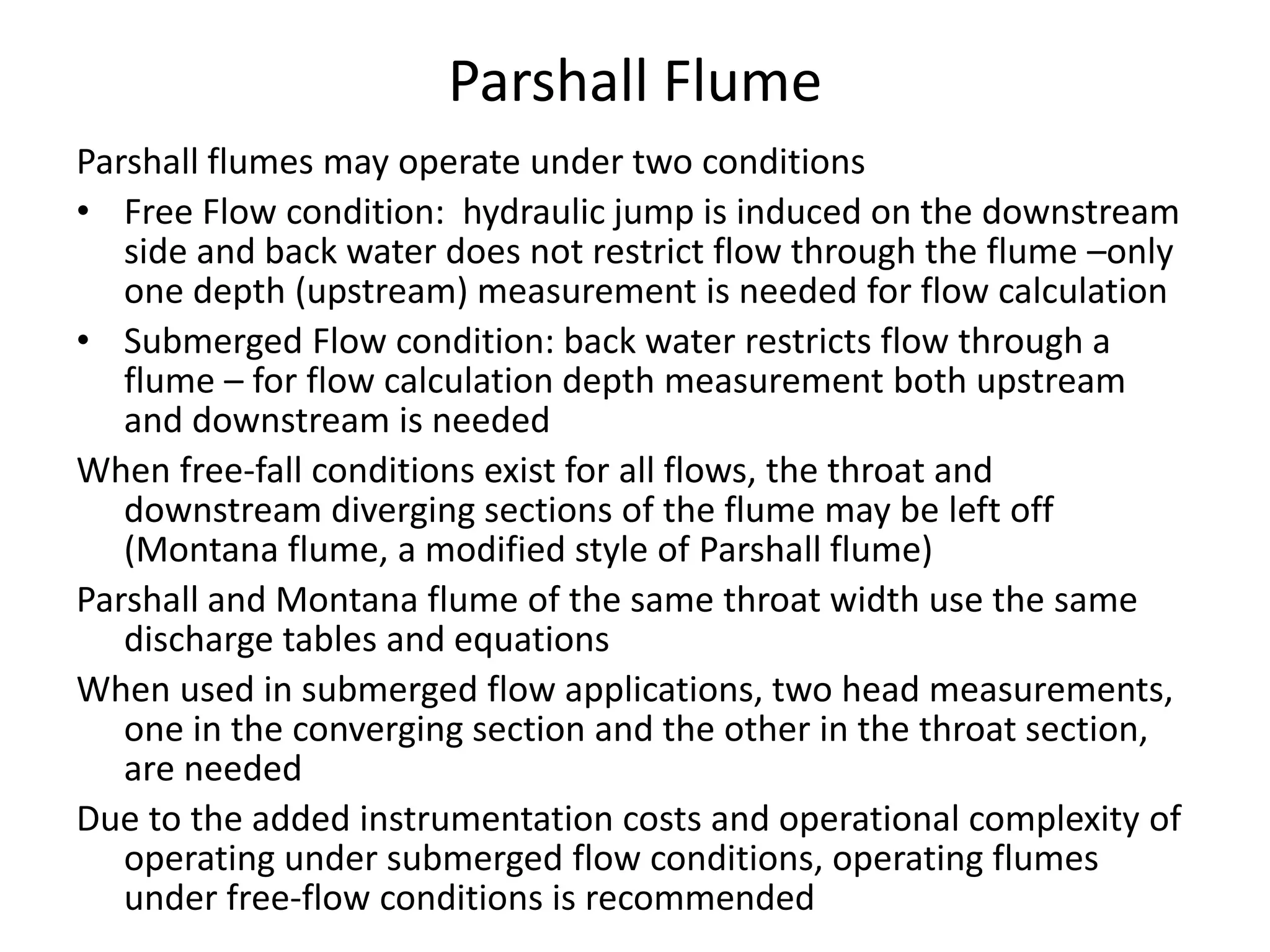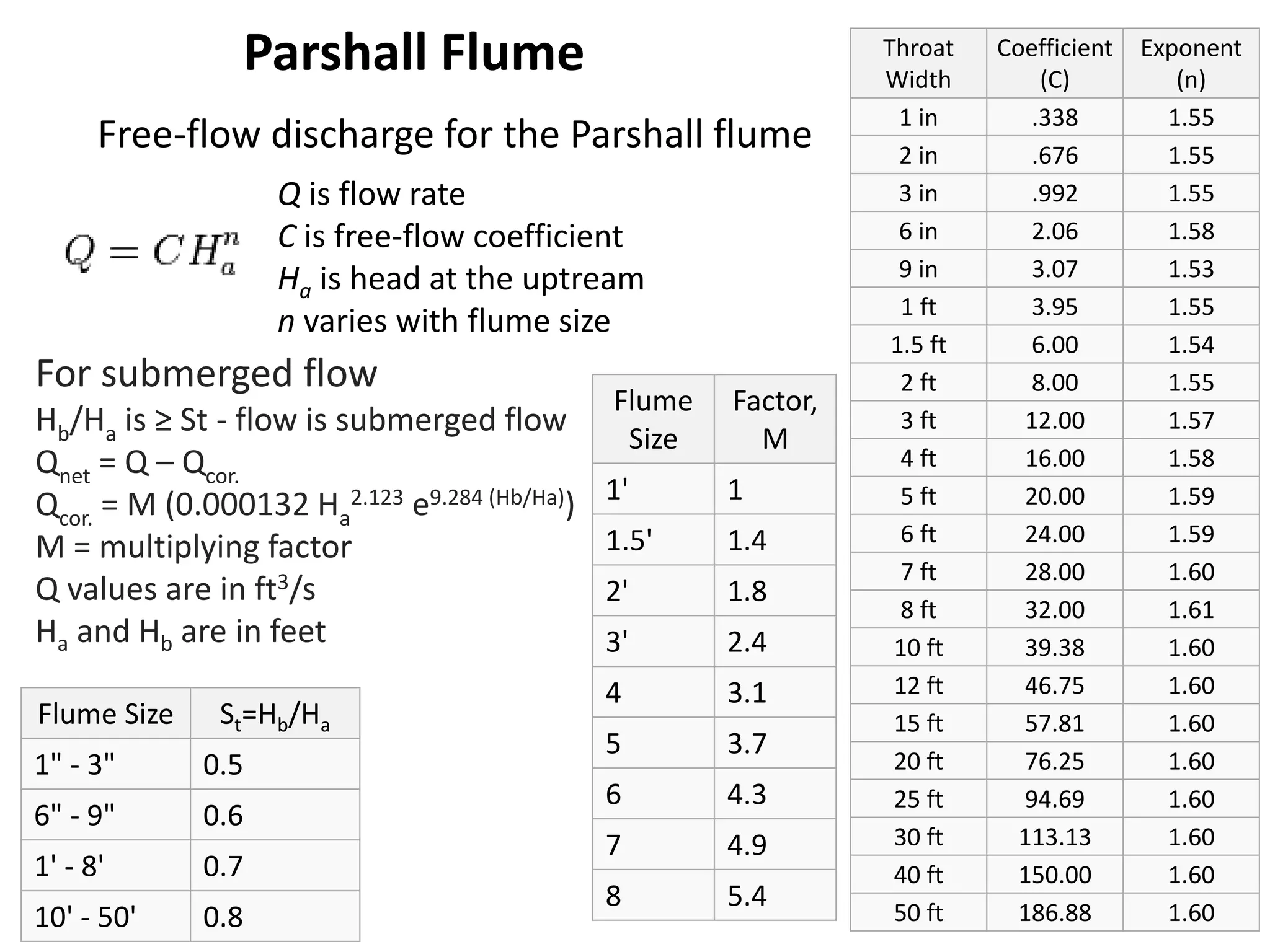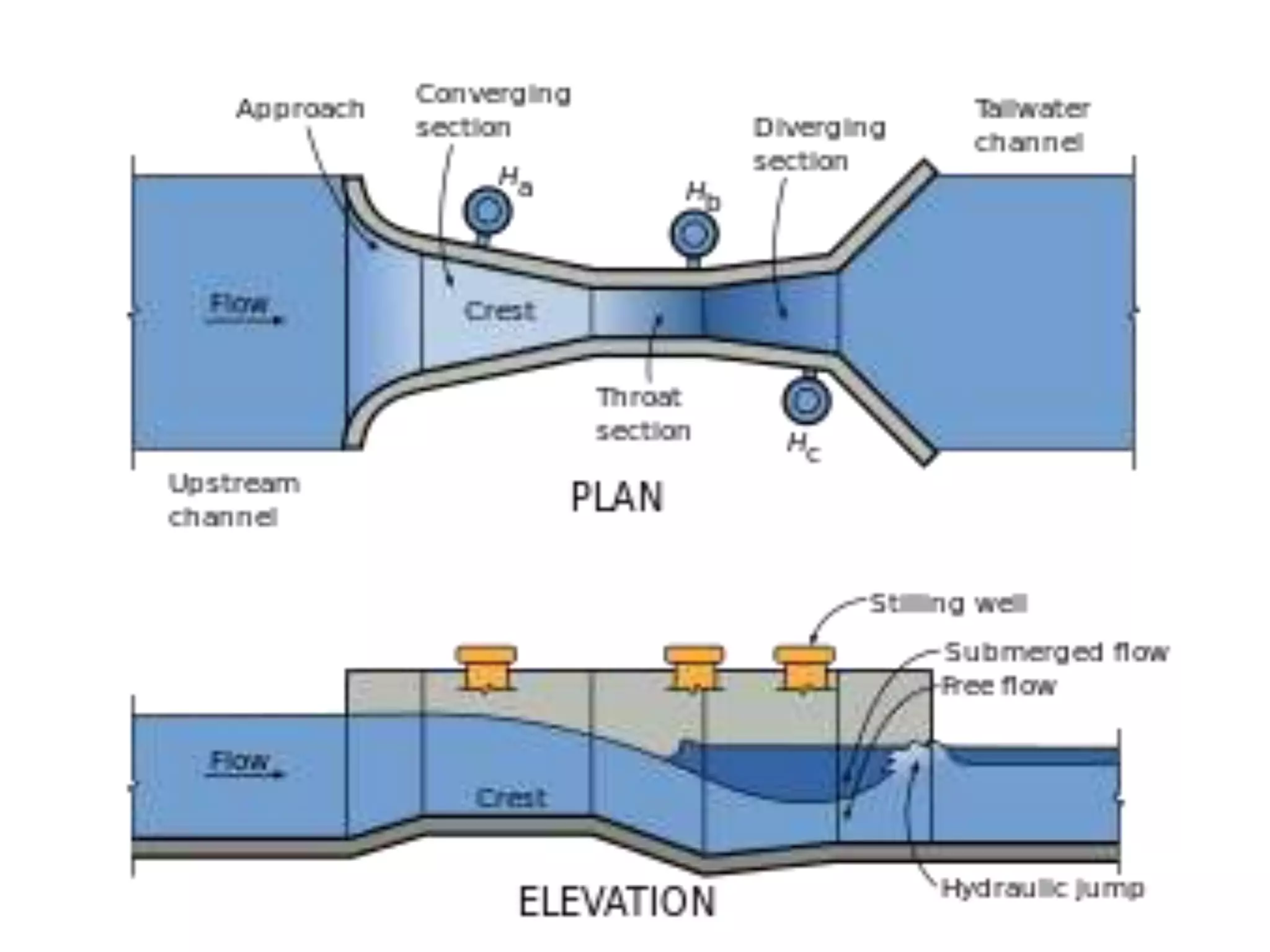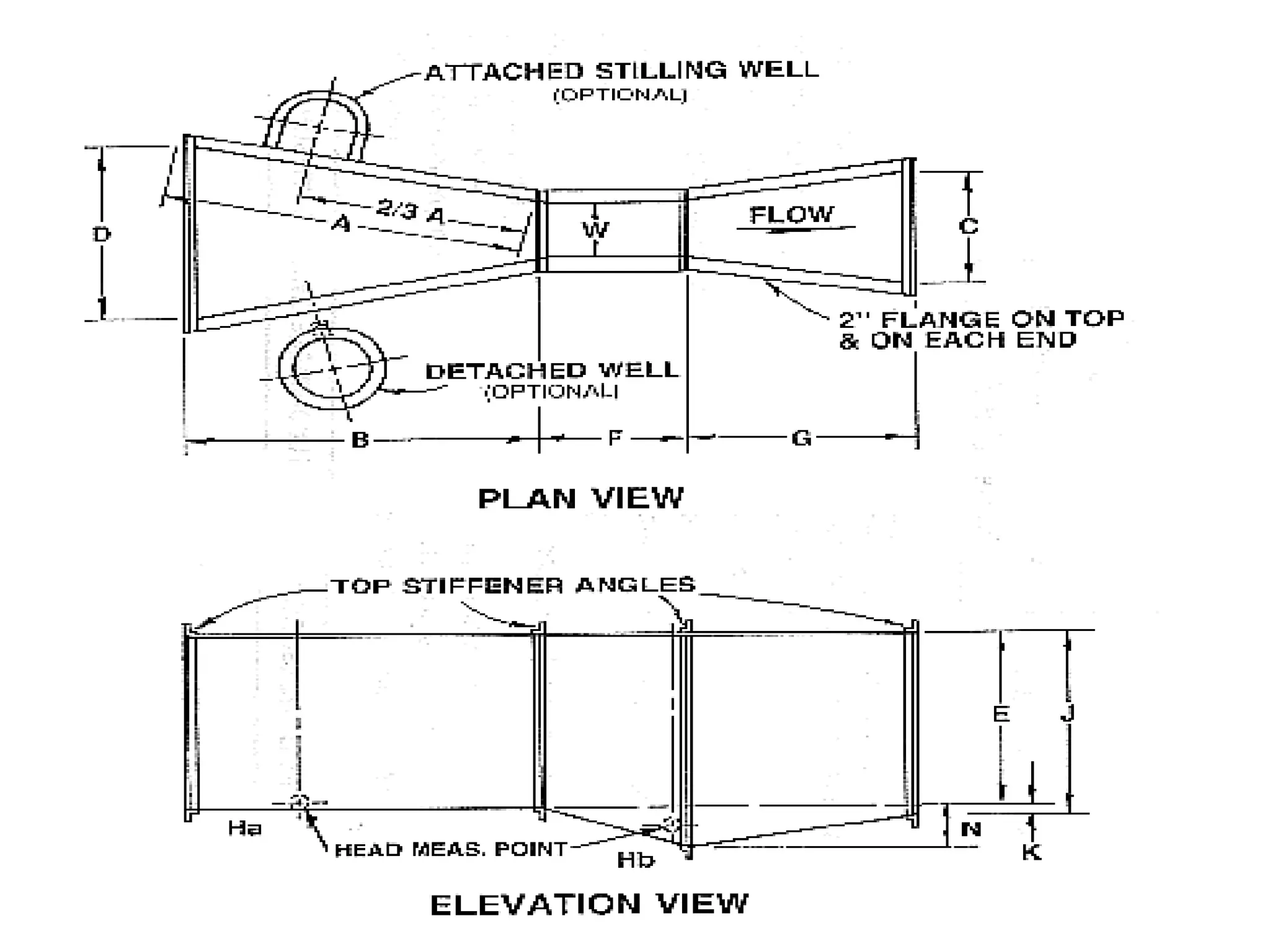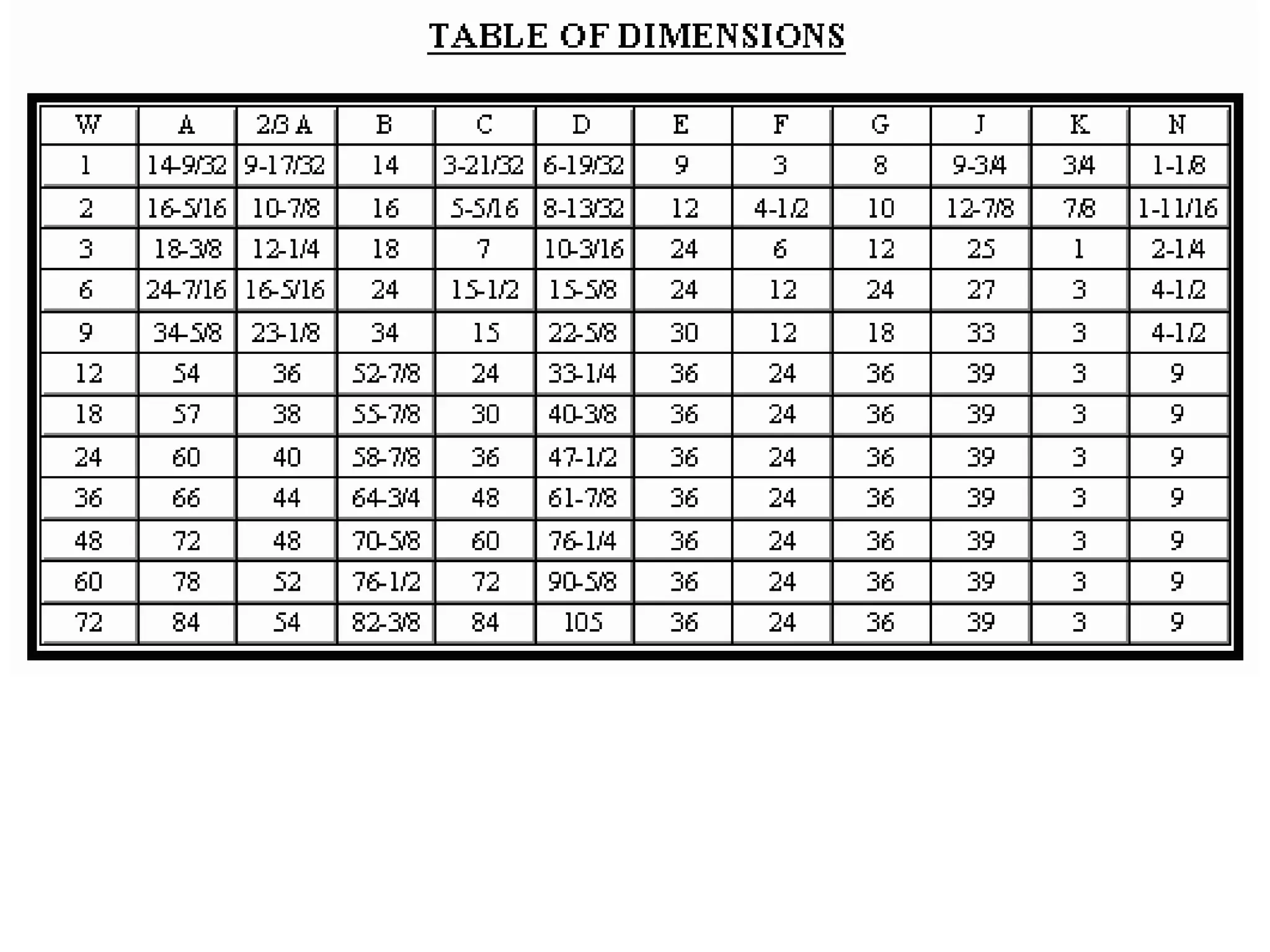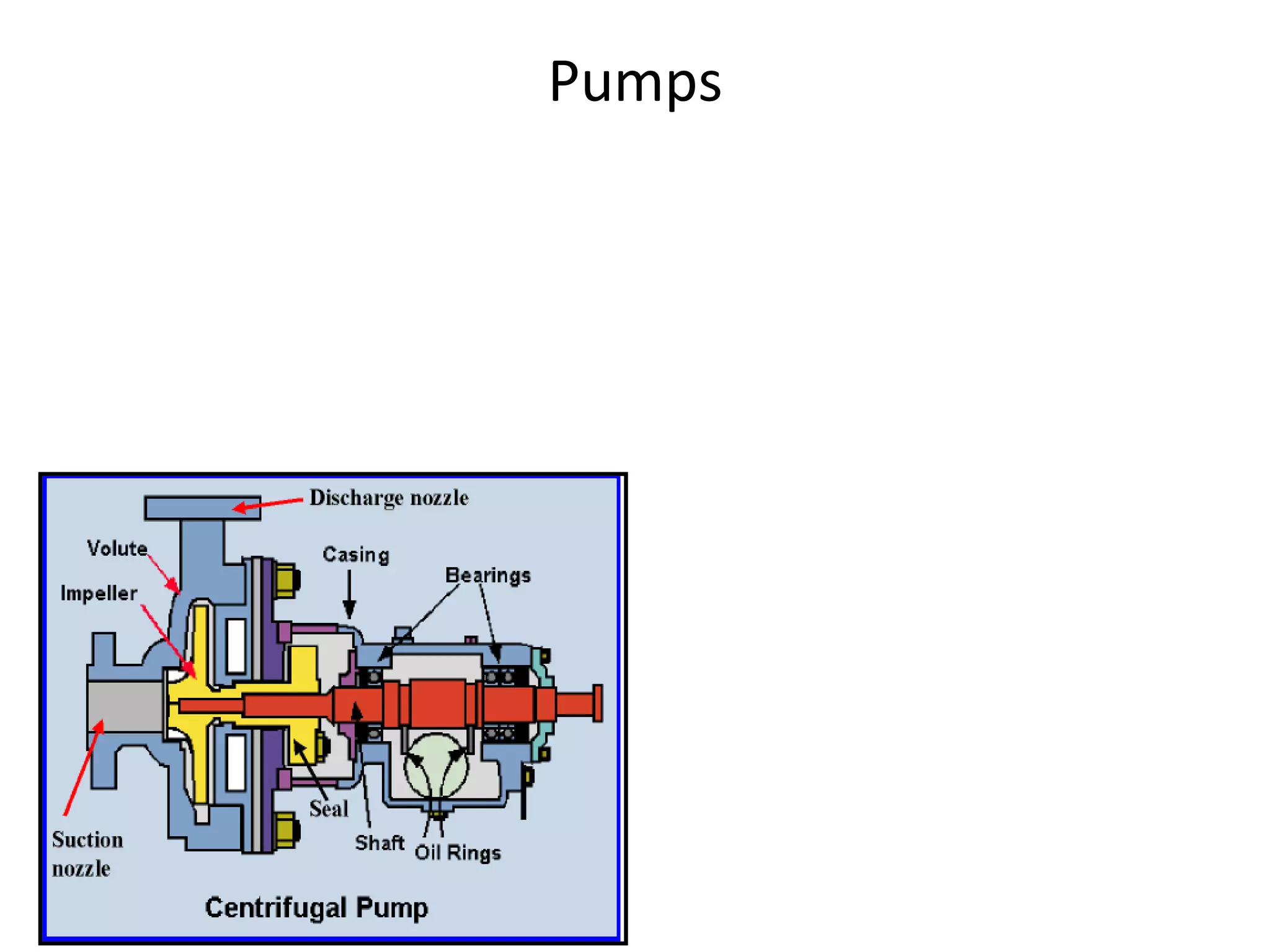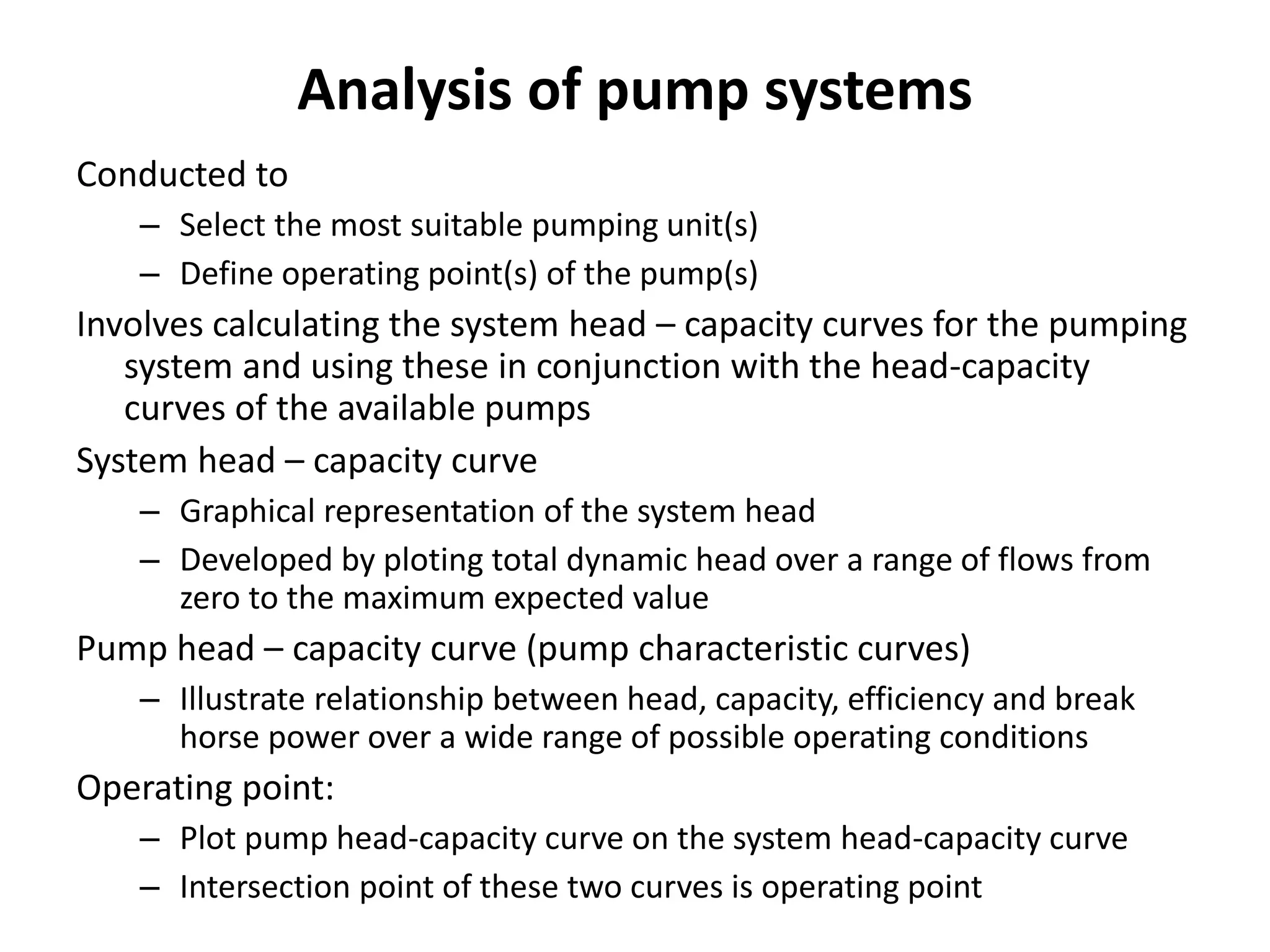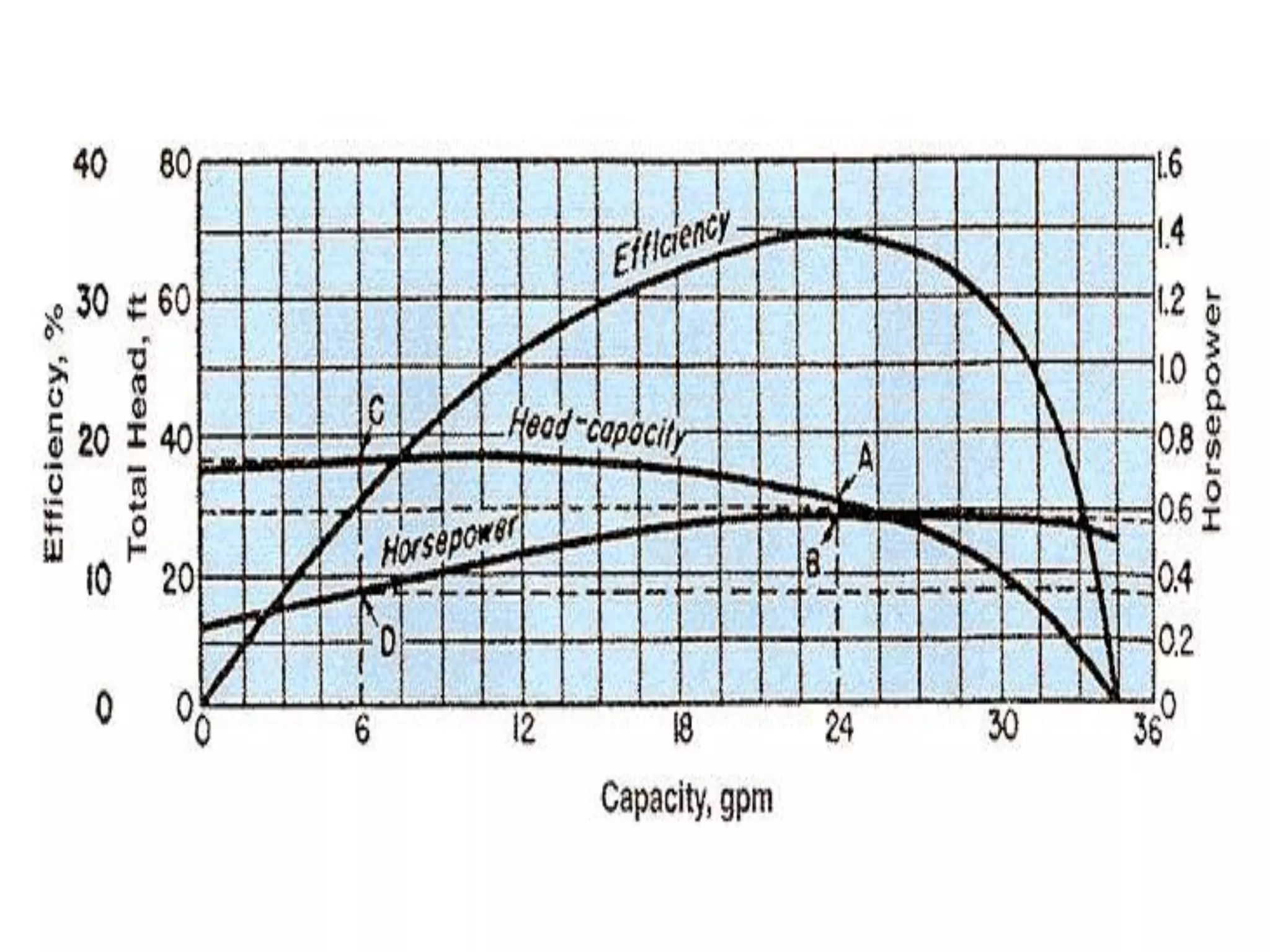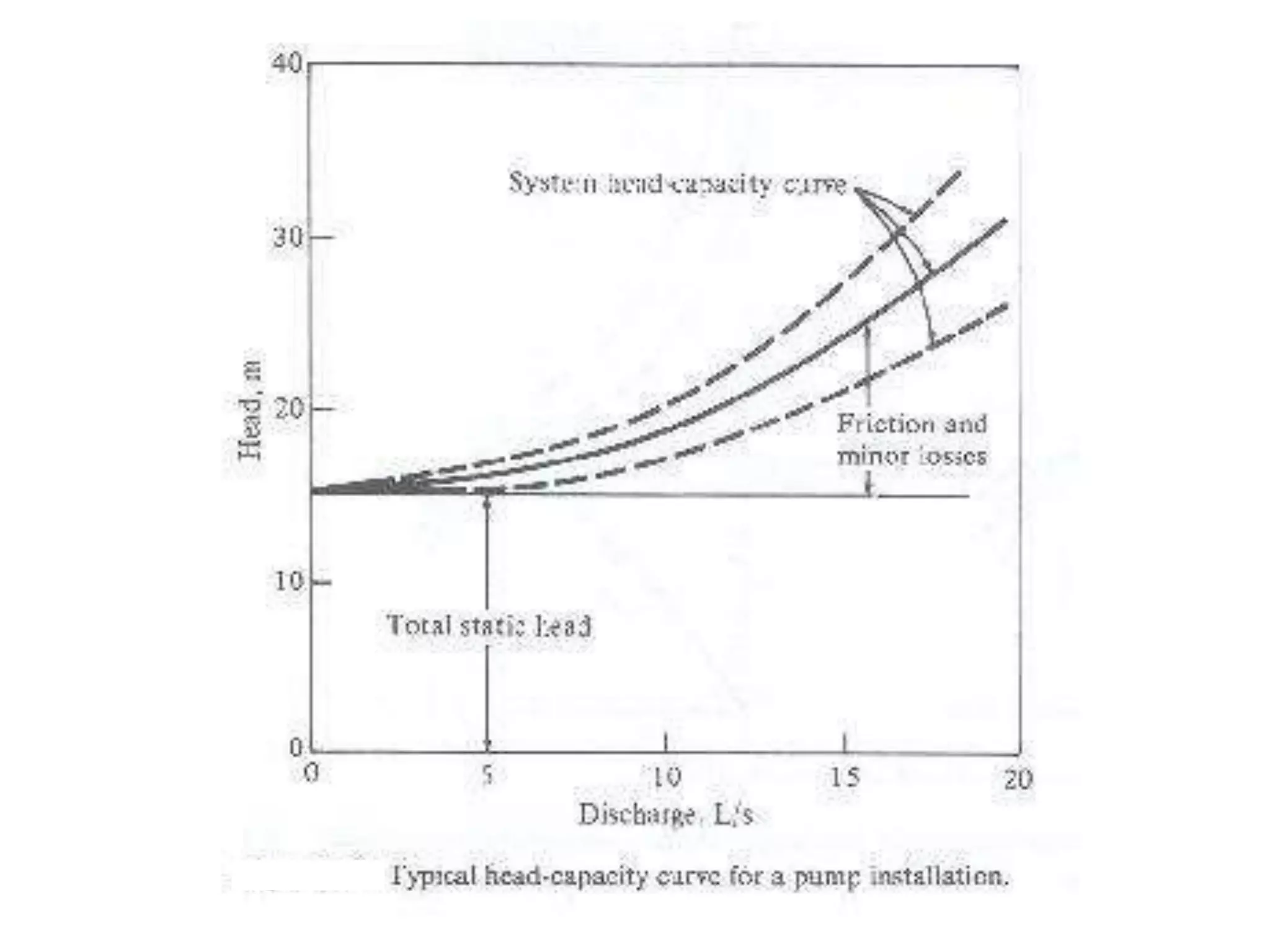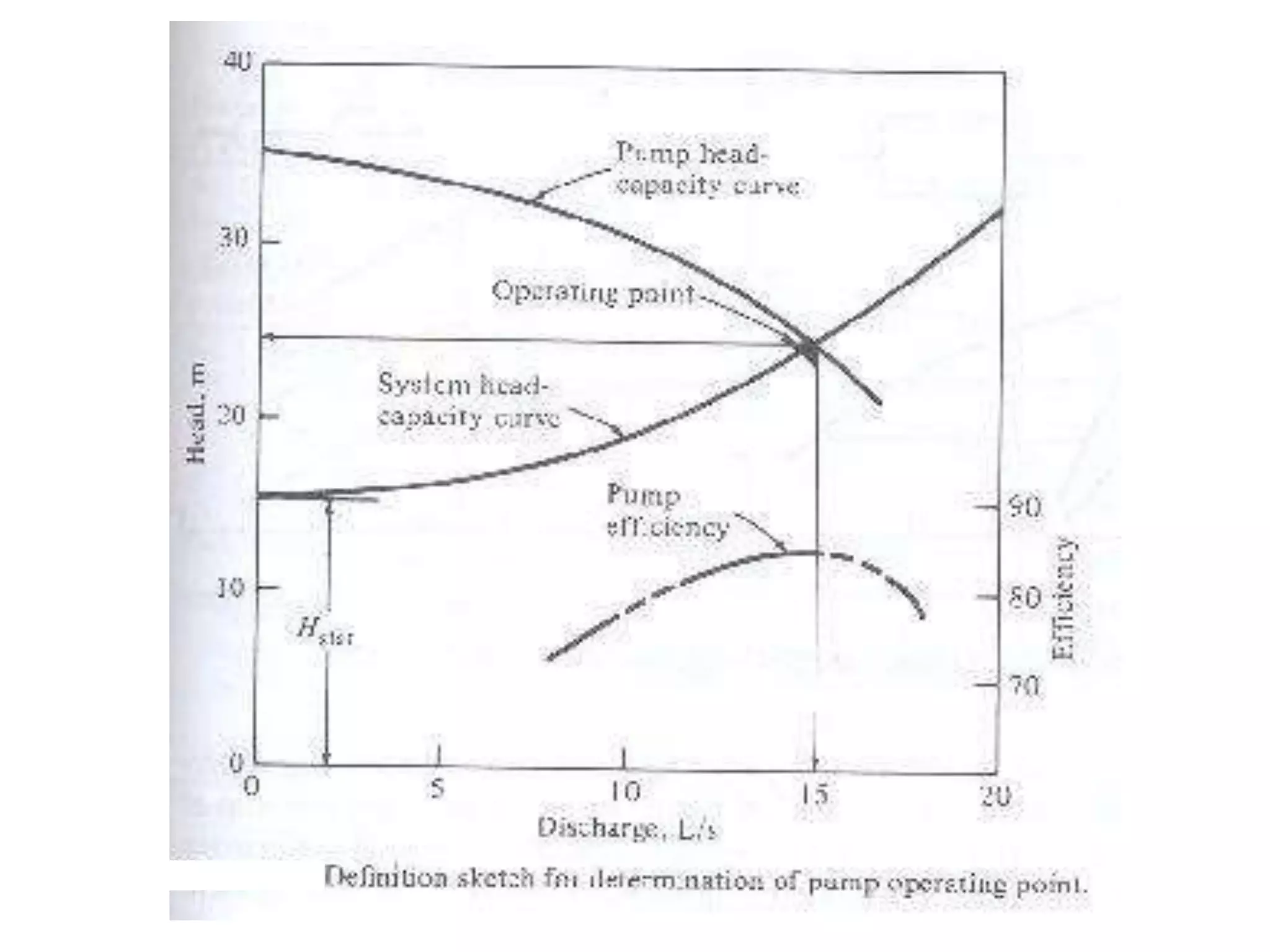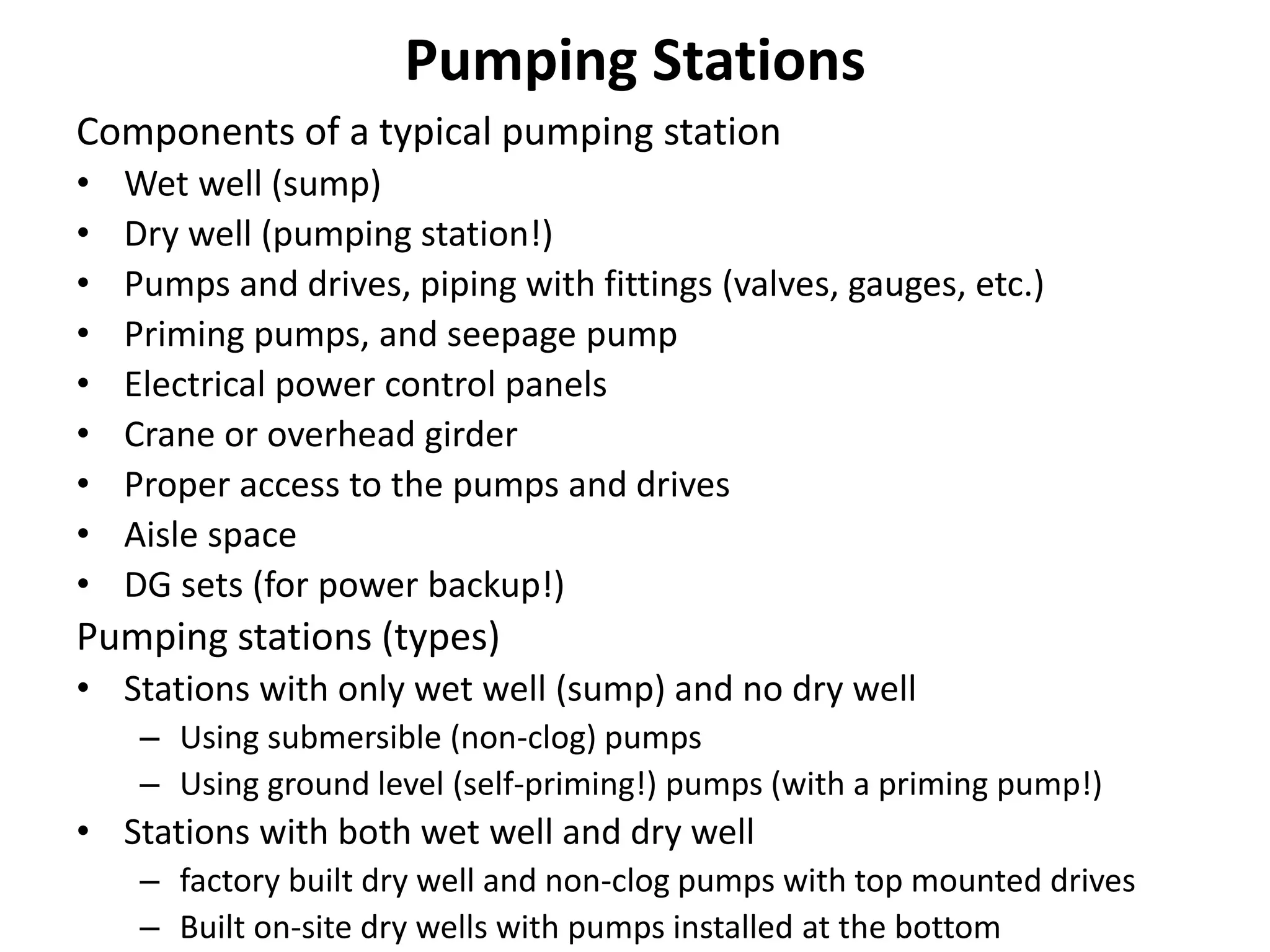The document covers various concepts in water pipeline and channel hydraulics, including total energy components, hydraulic grade lines, and energy grade lines. It also discusses head loss due to friction, formulas for calculating head loss, and types of flow measurement devices such as weirs and flumes. Additionally, the document addresses valves, flow control methods, and the importance of preventing air pockets in pipelines.
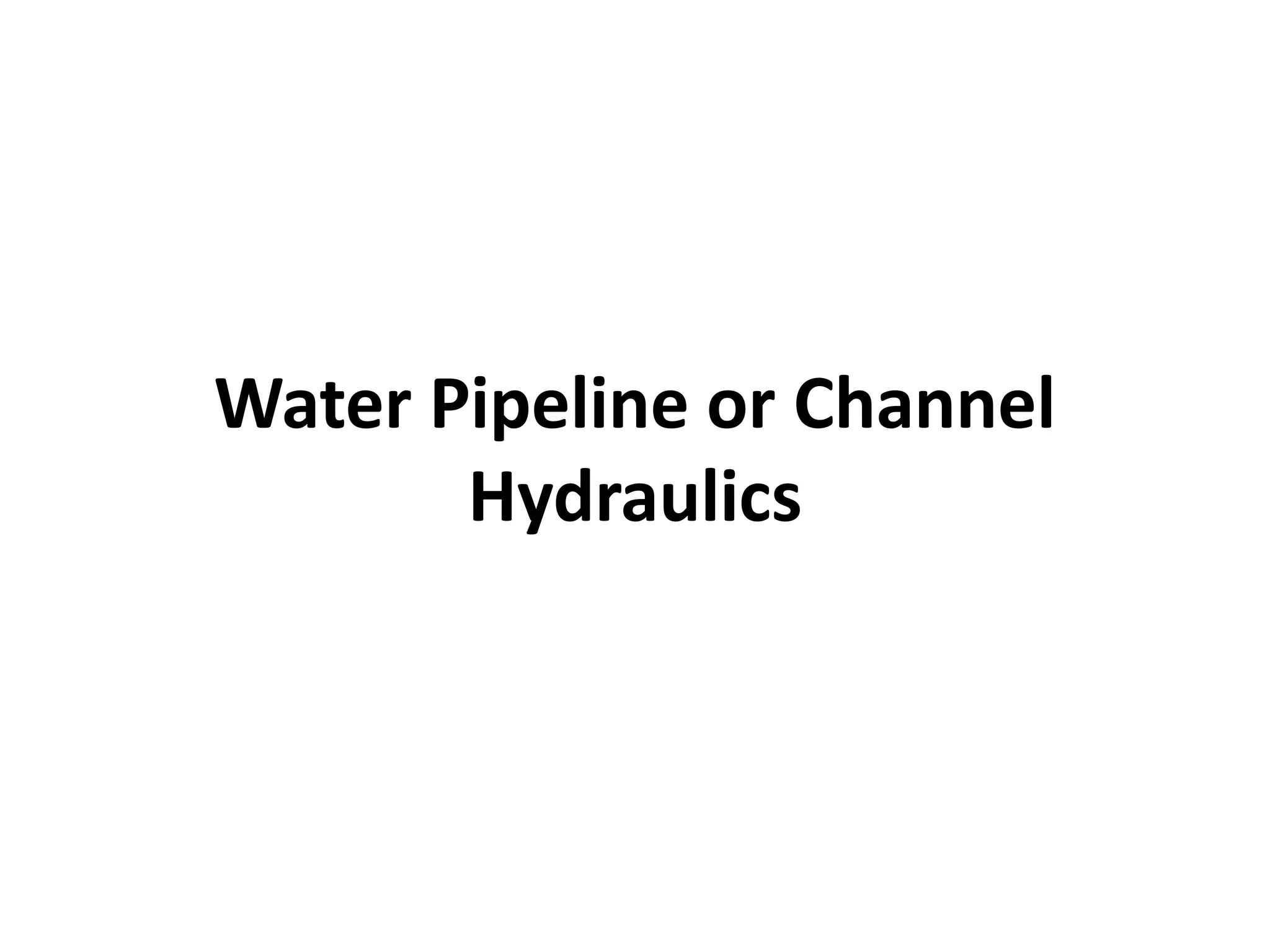
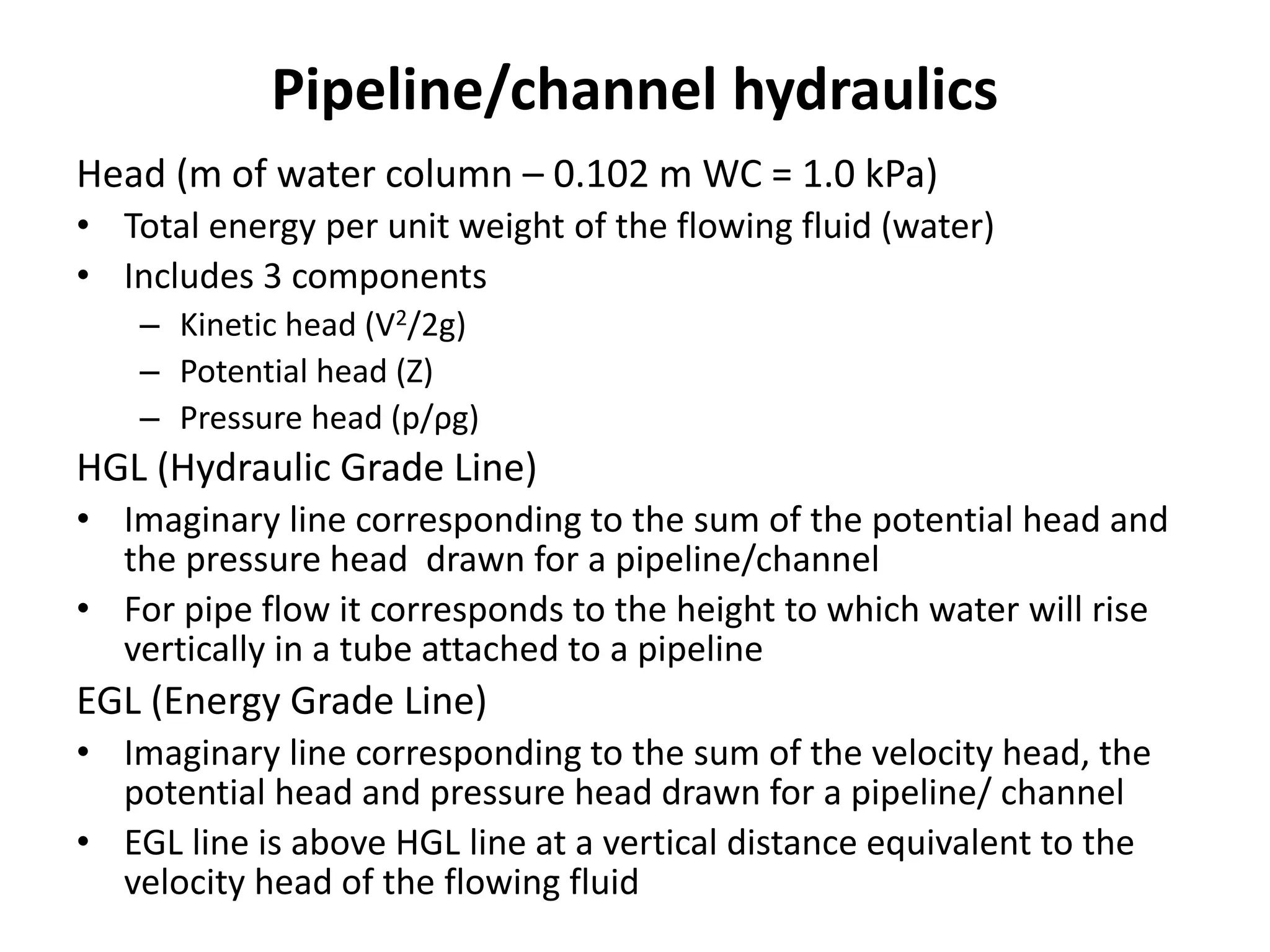
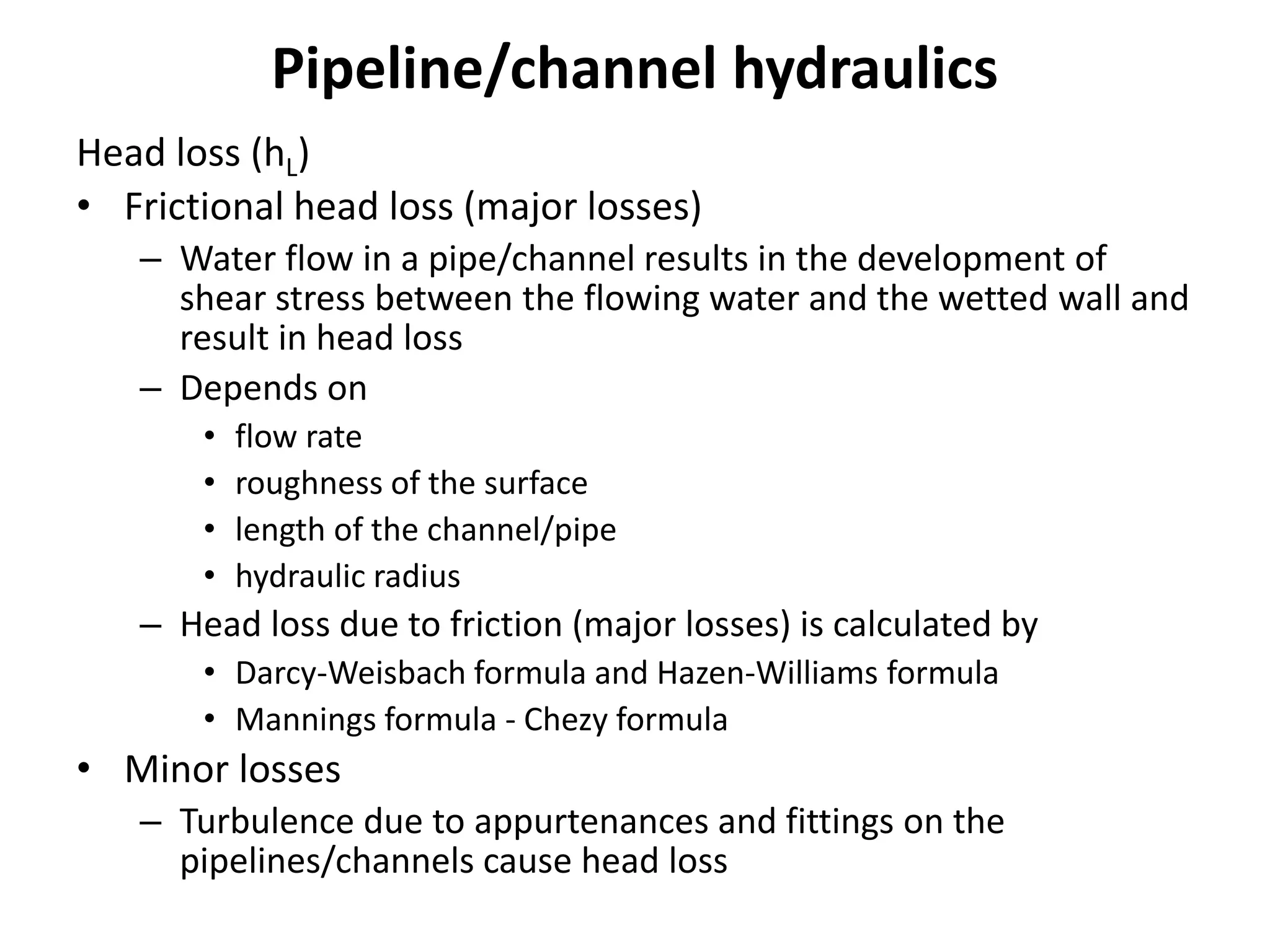
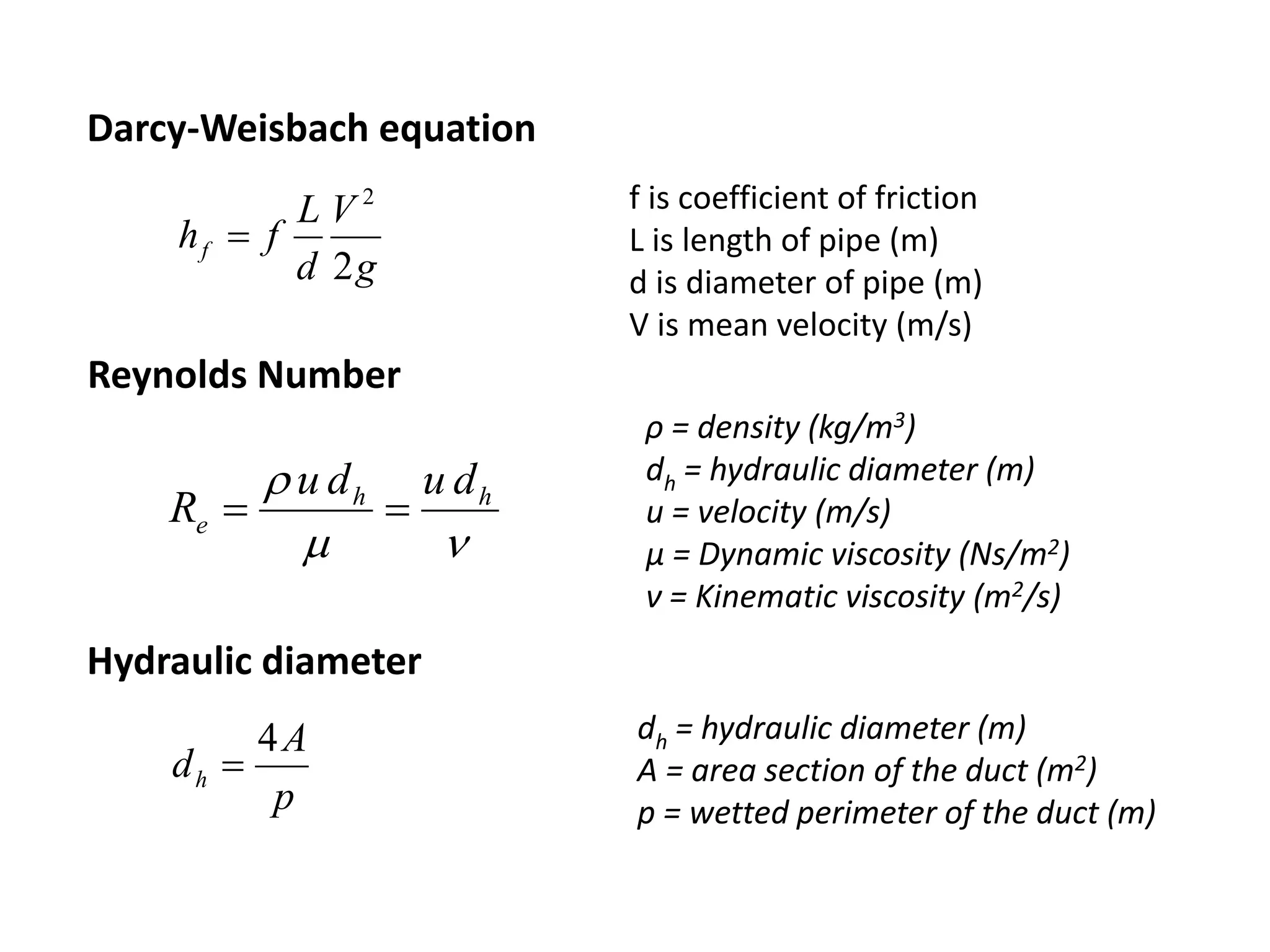
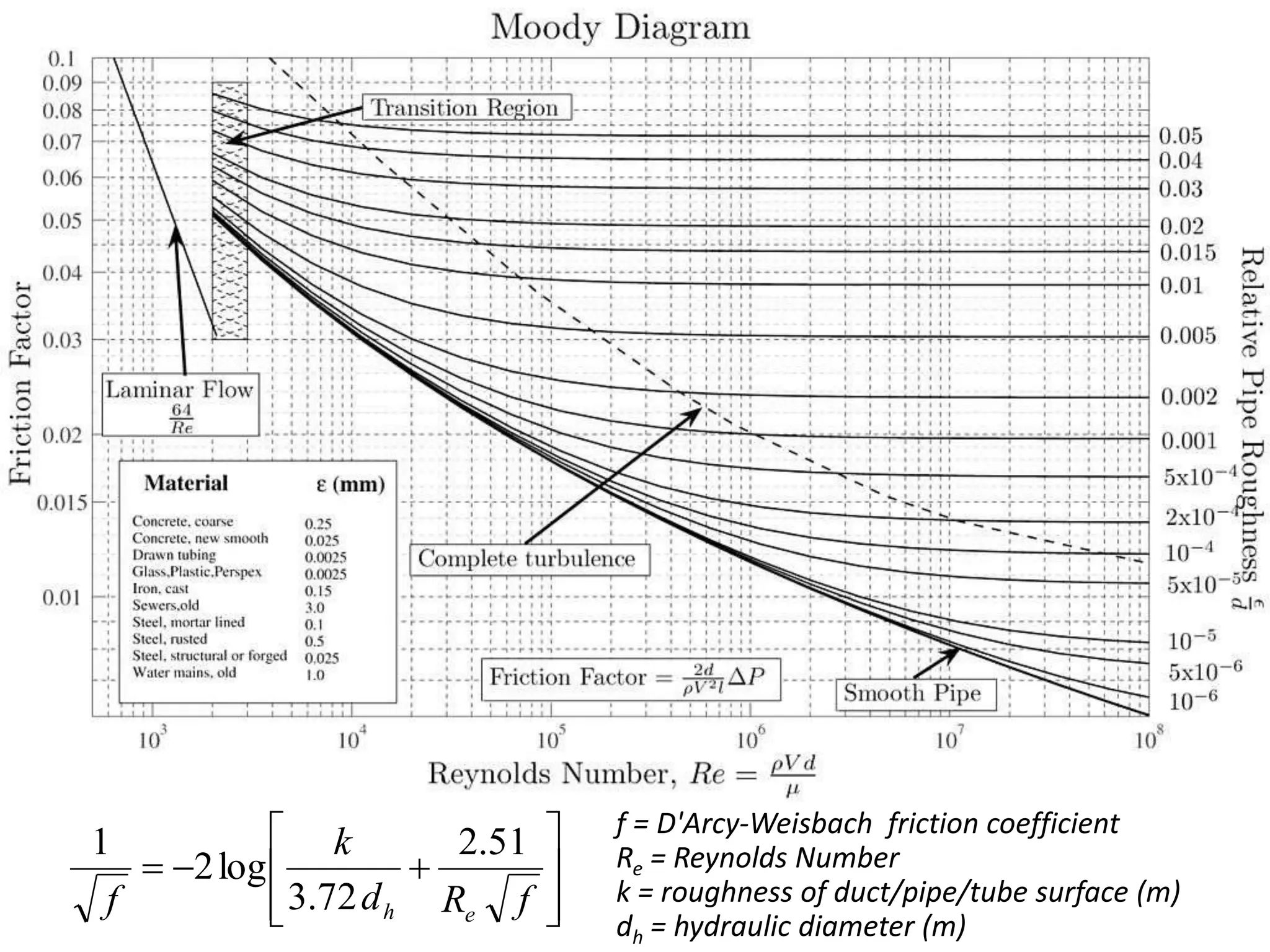
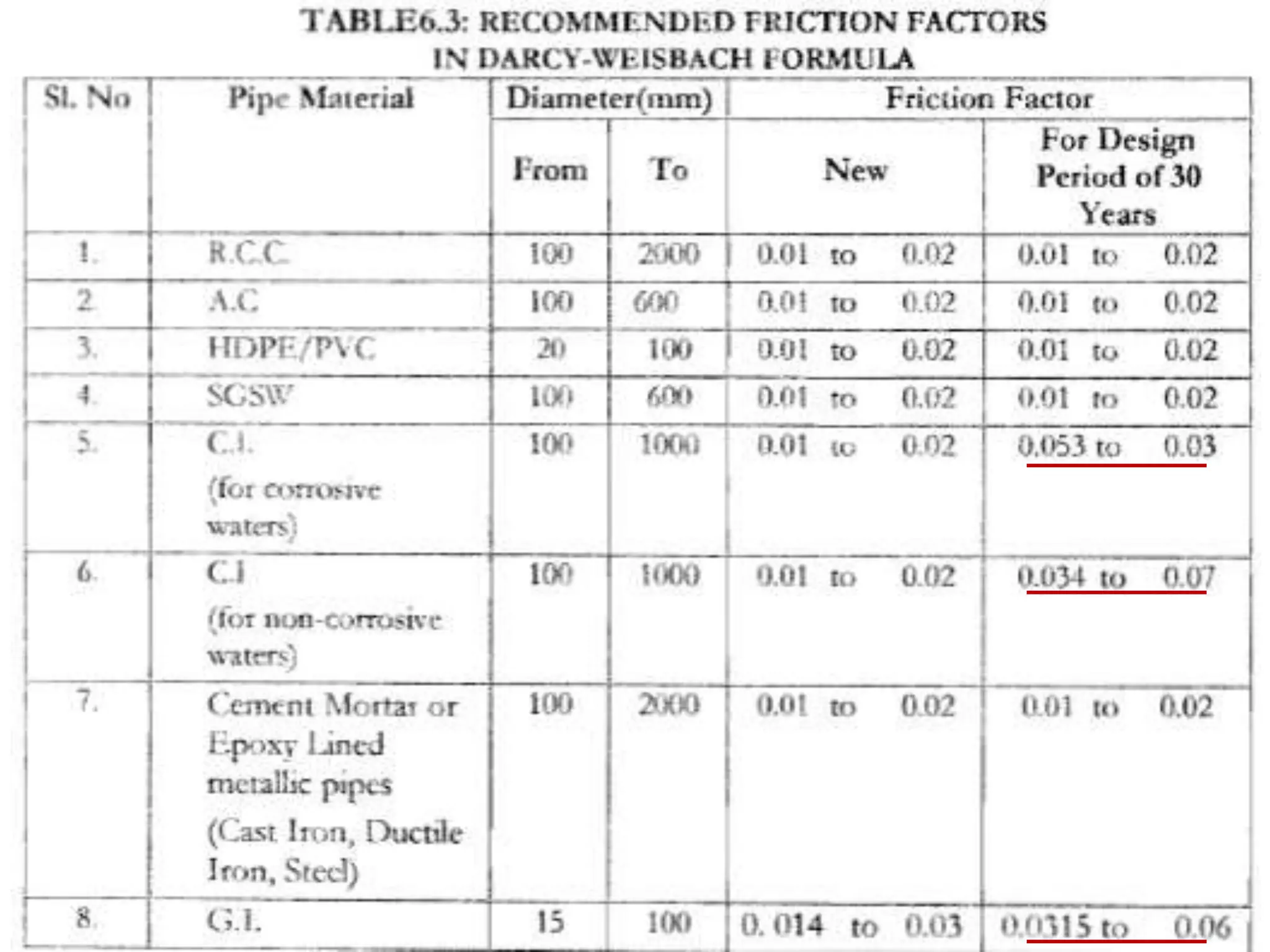
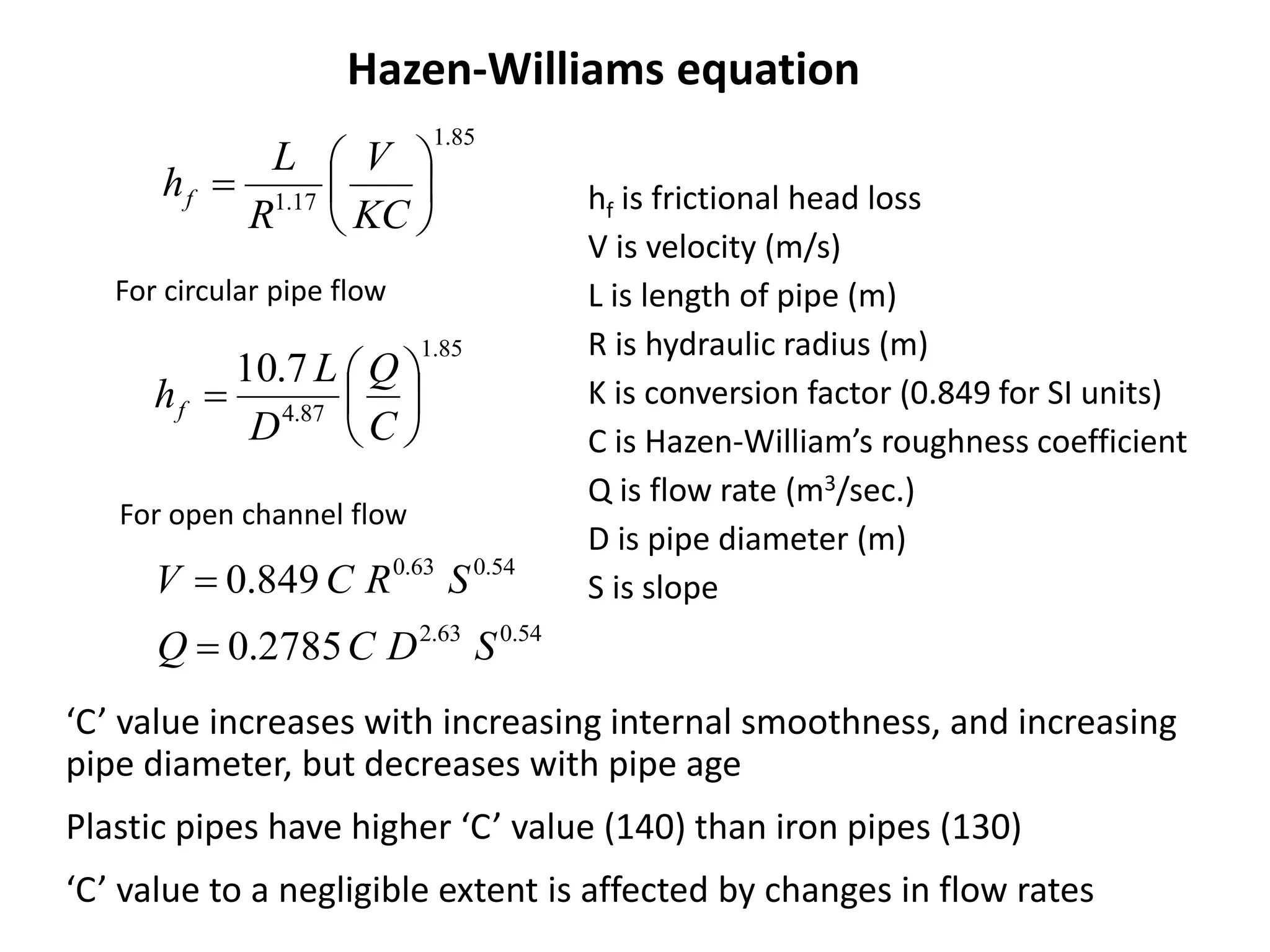

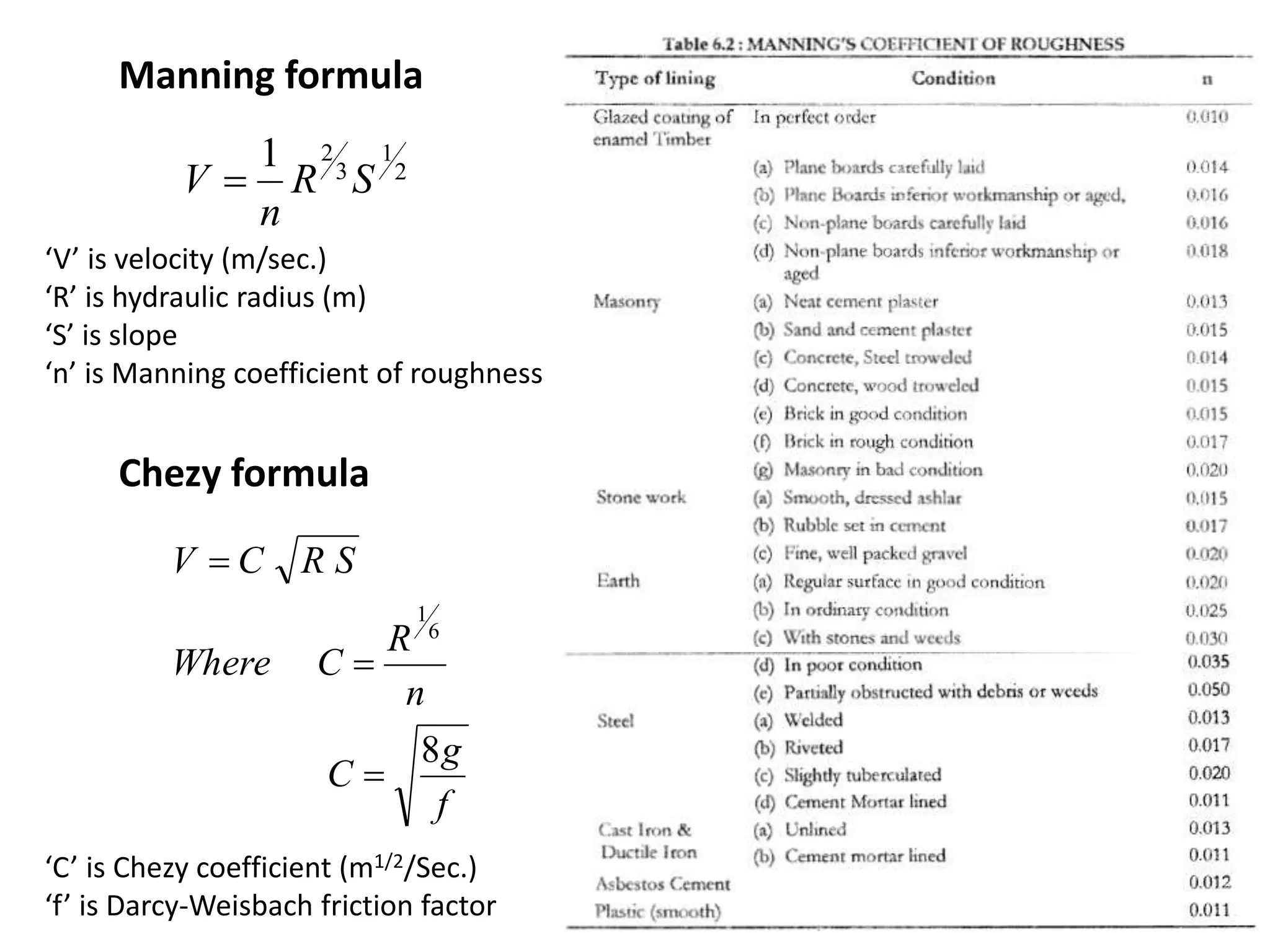
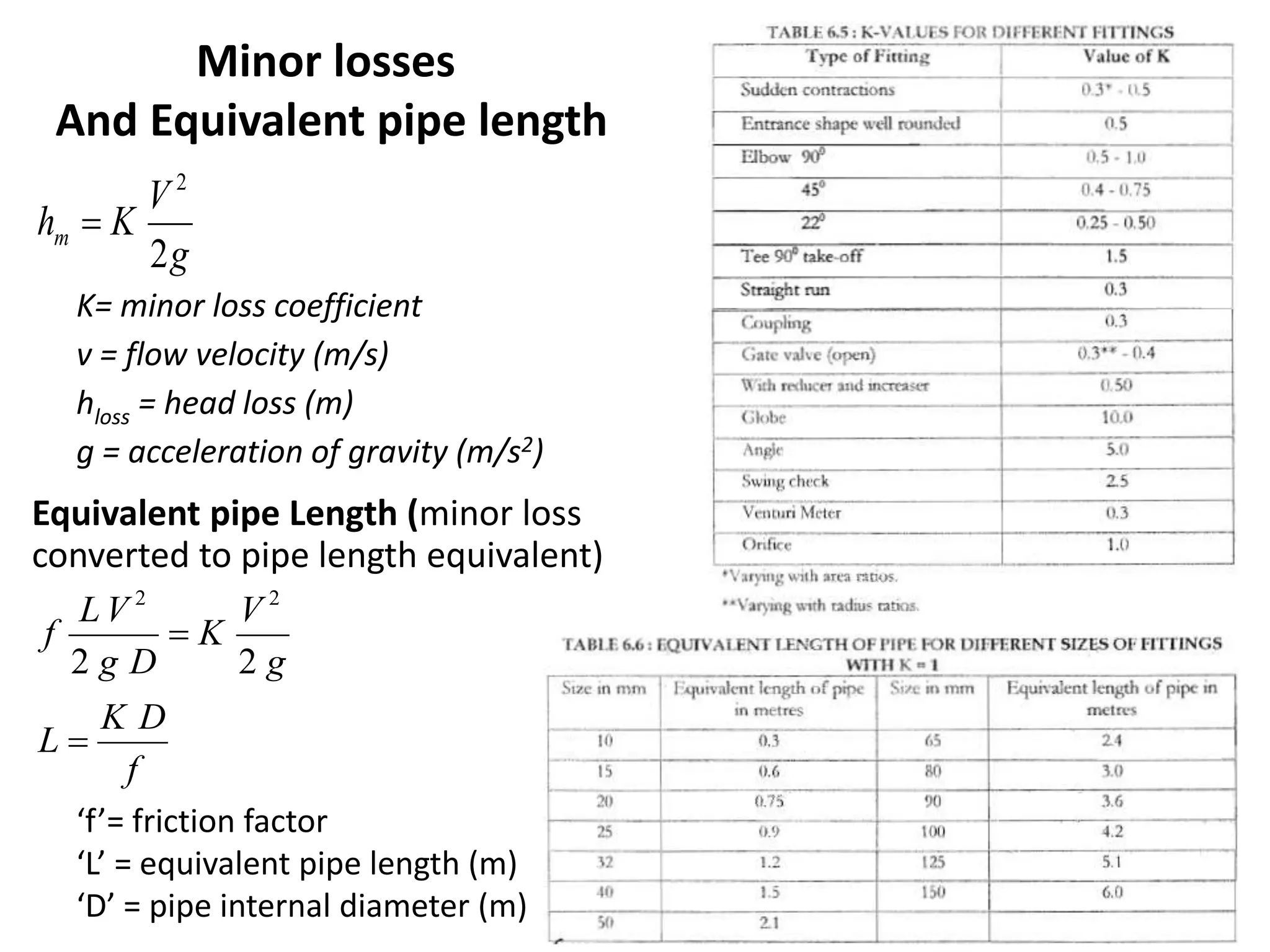

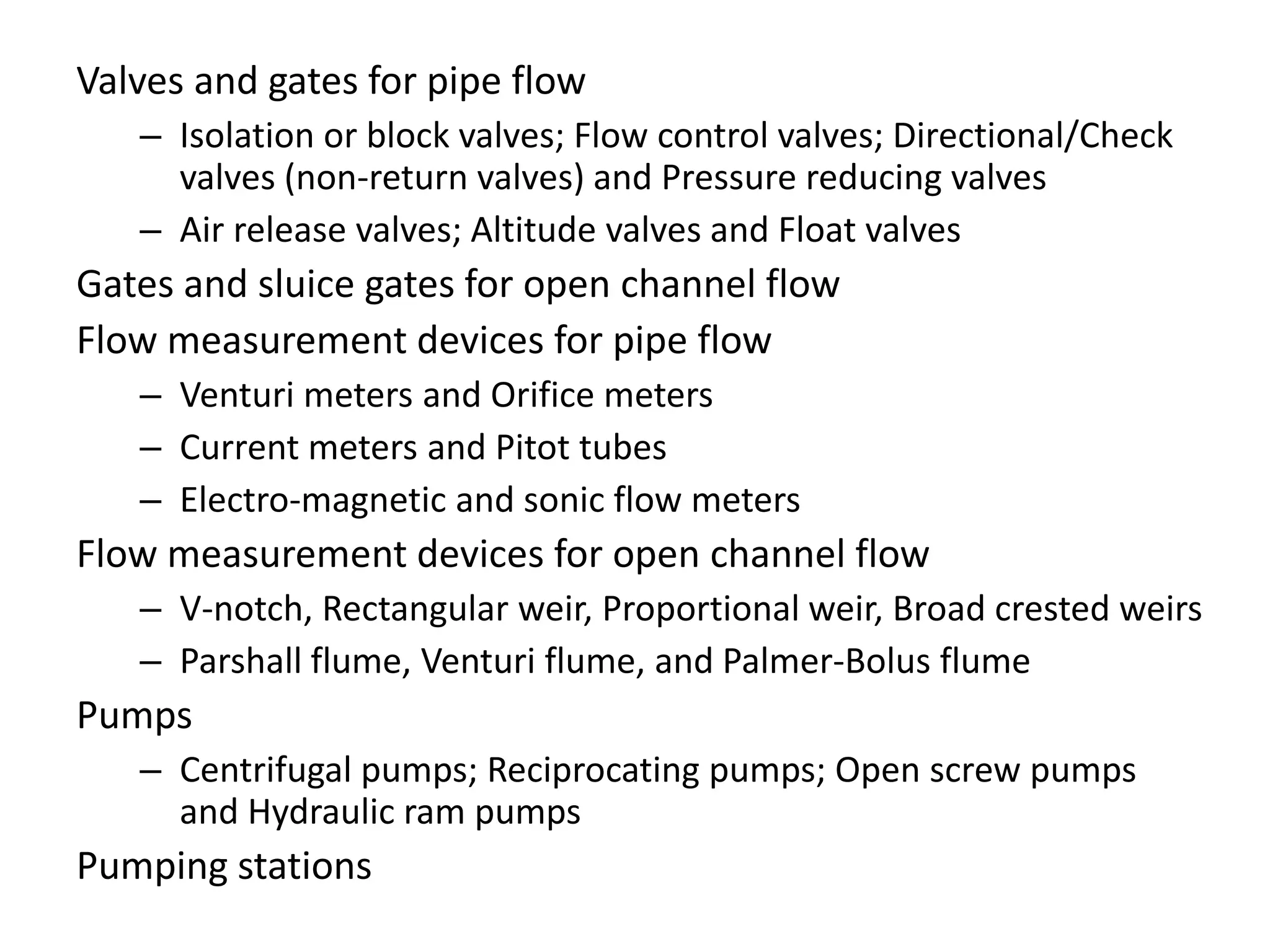
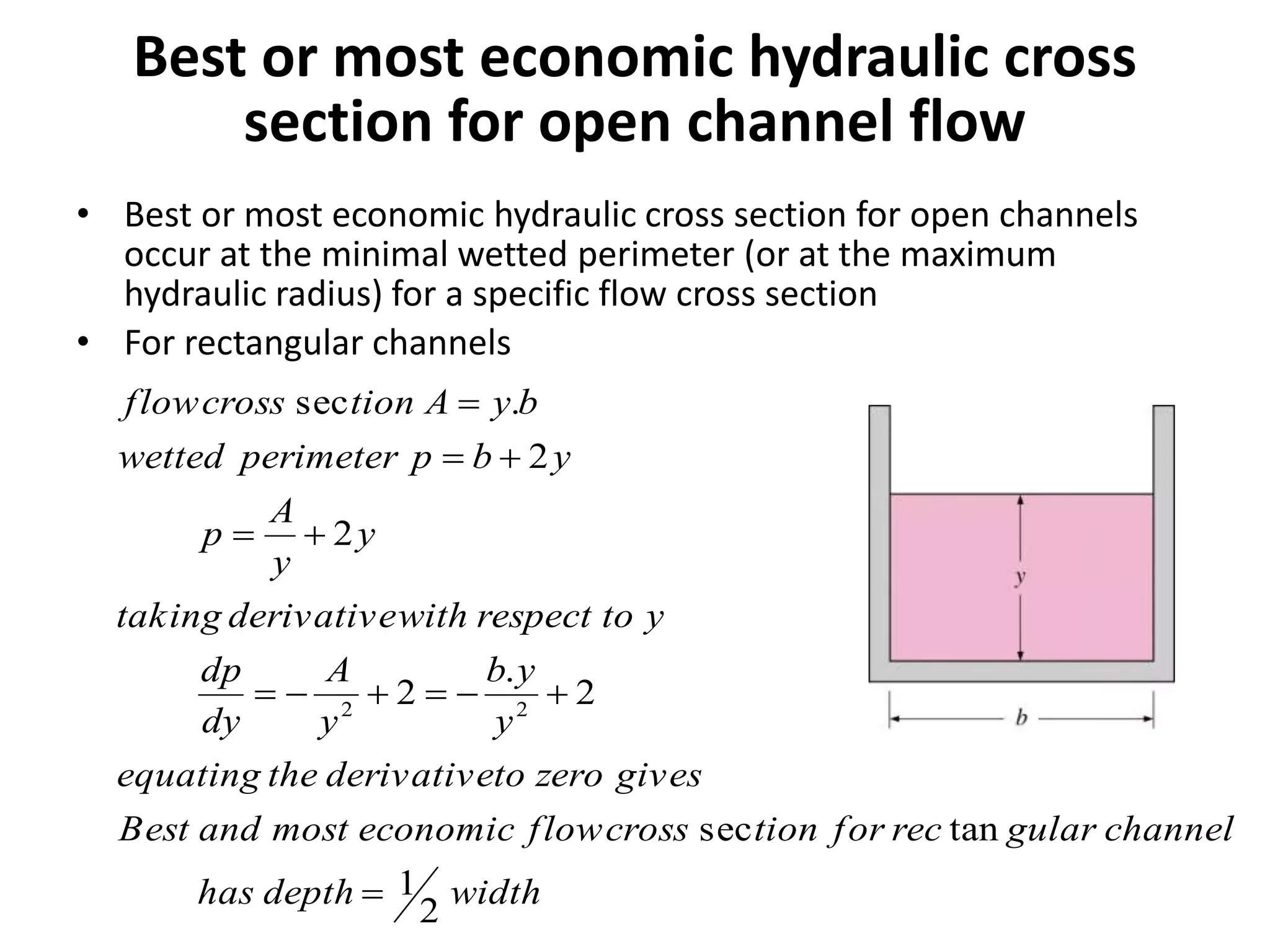
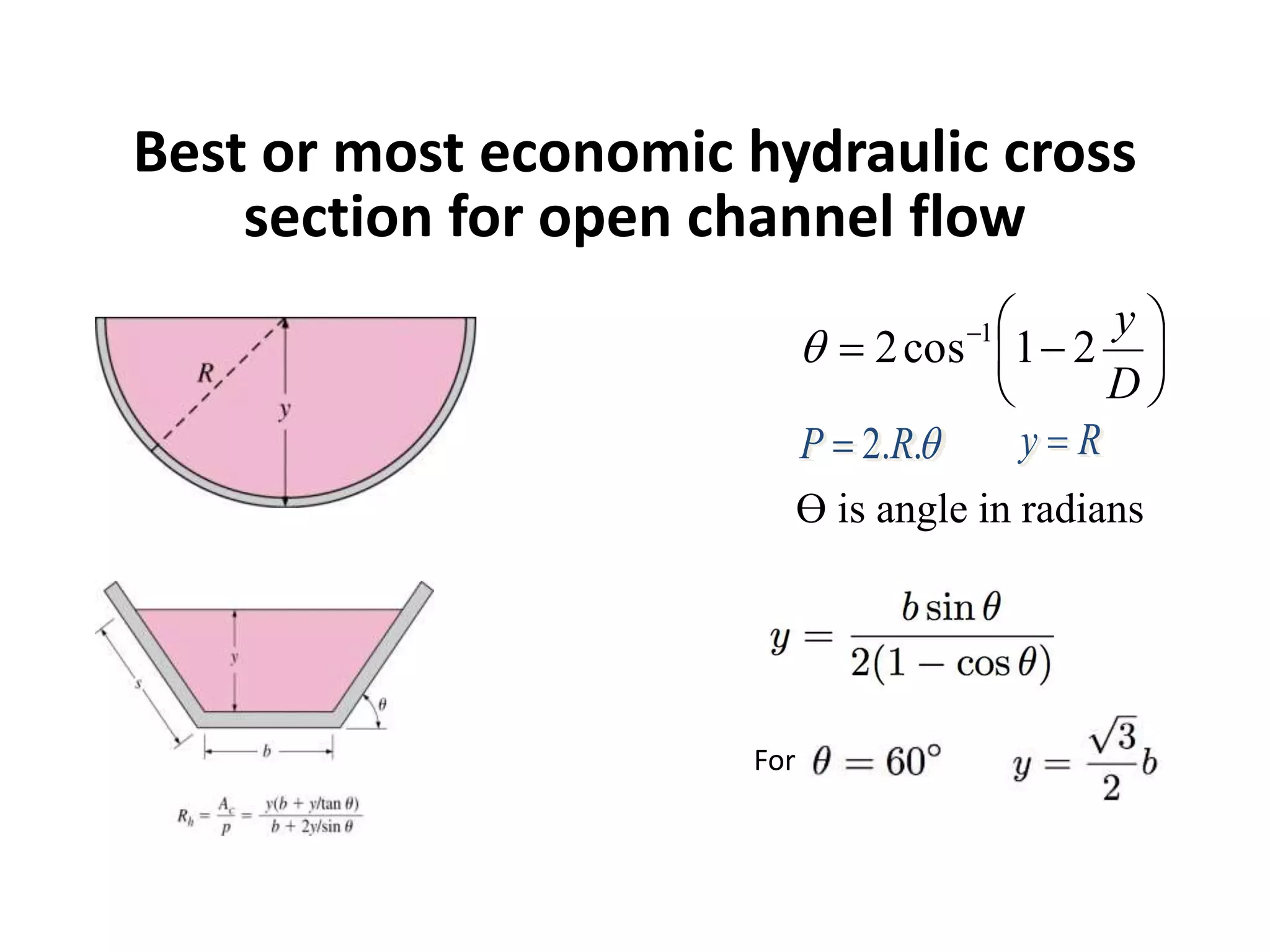
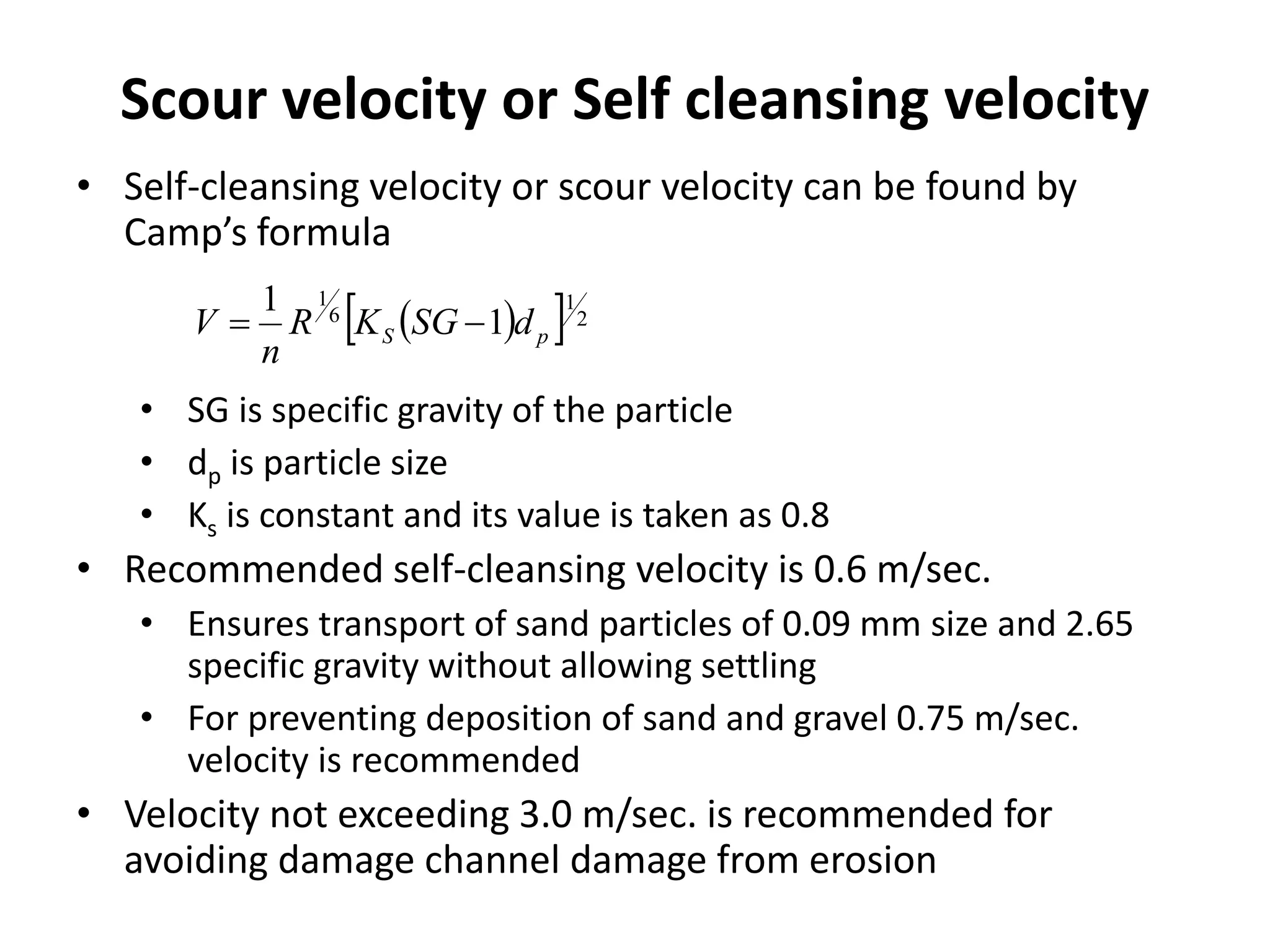

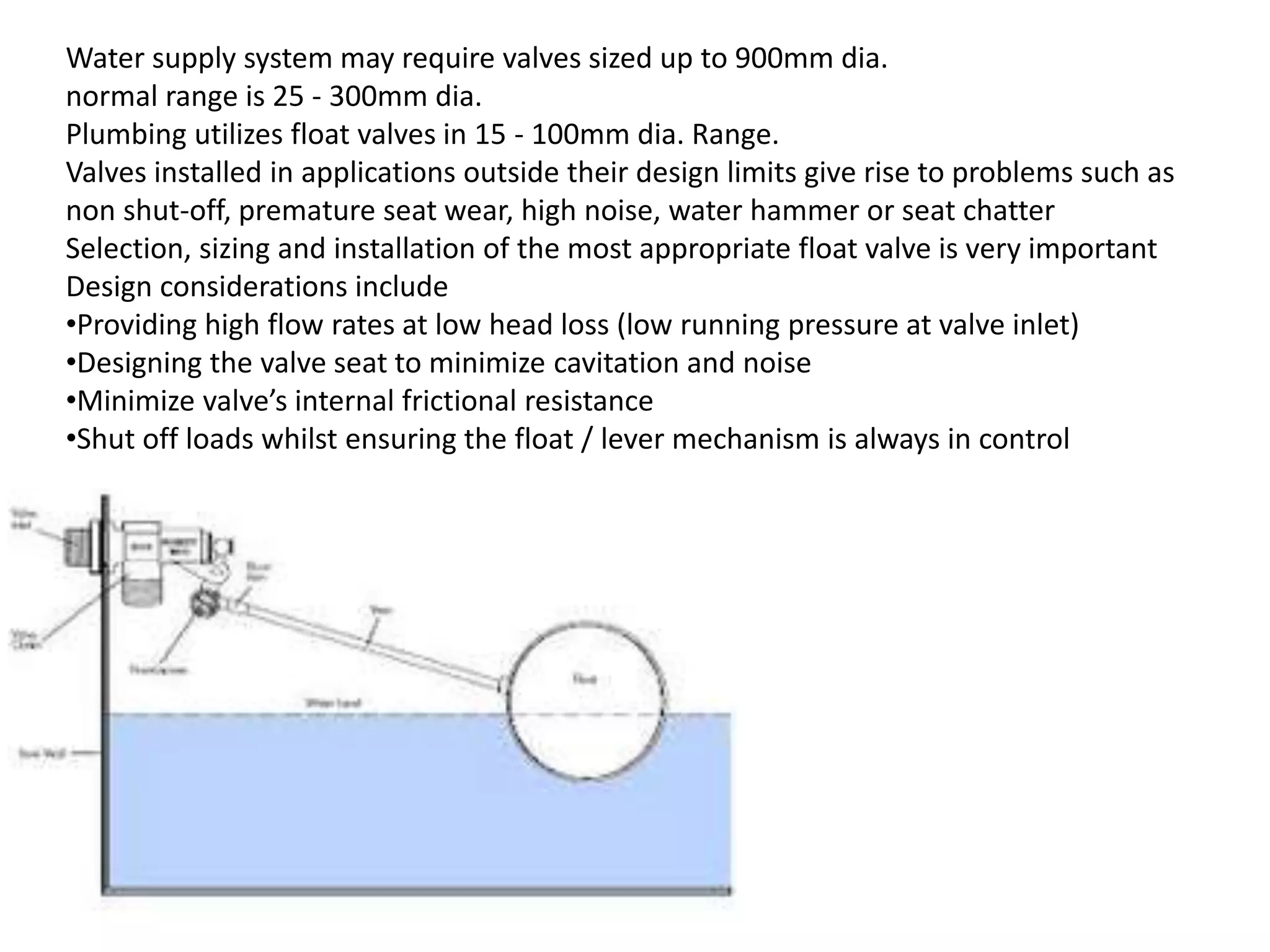
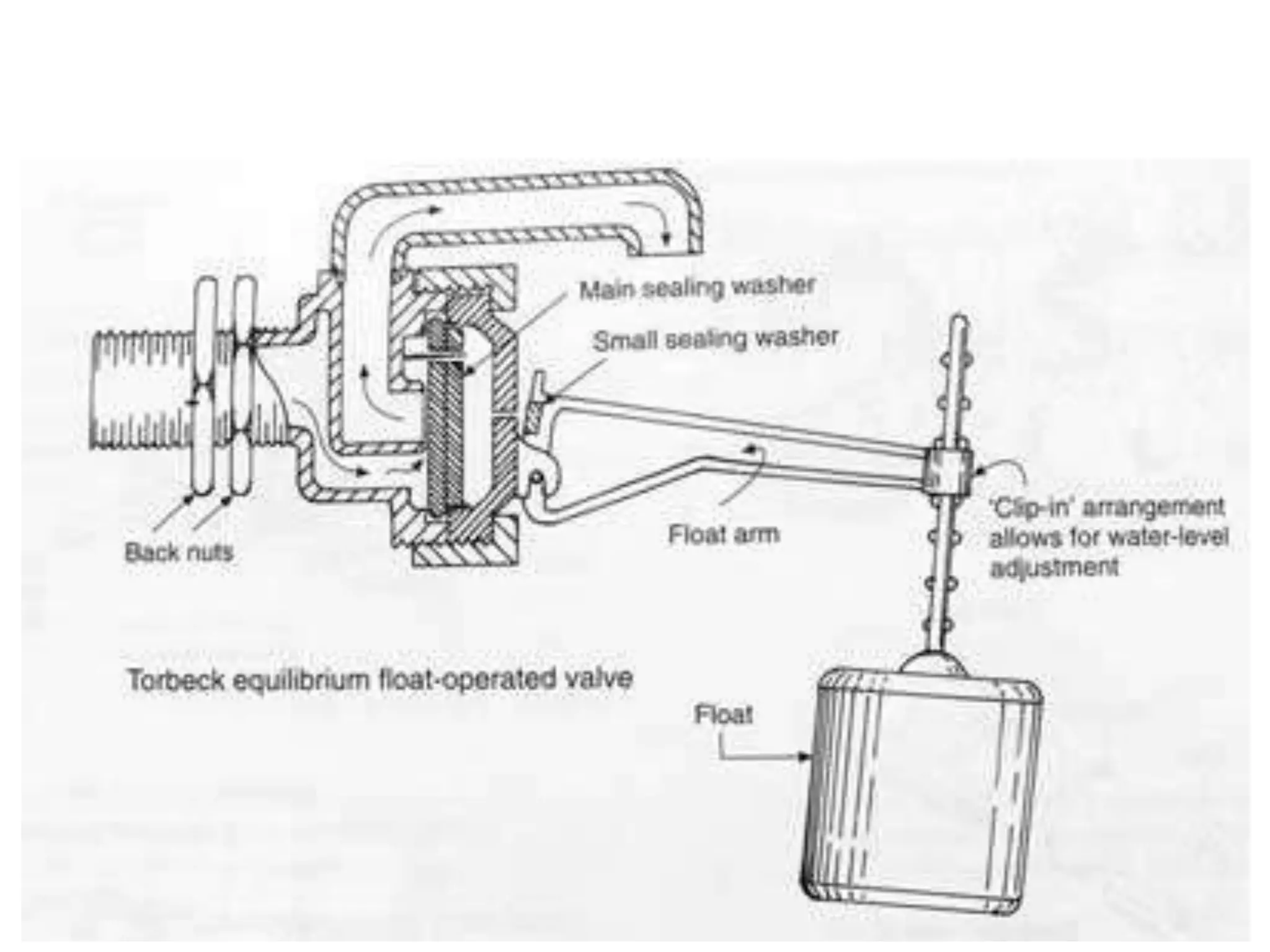
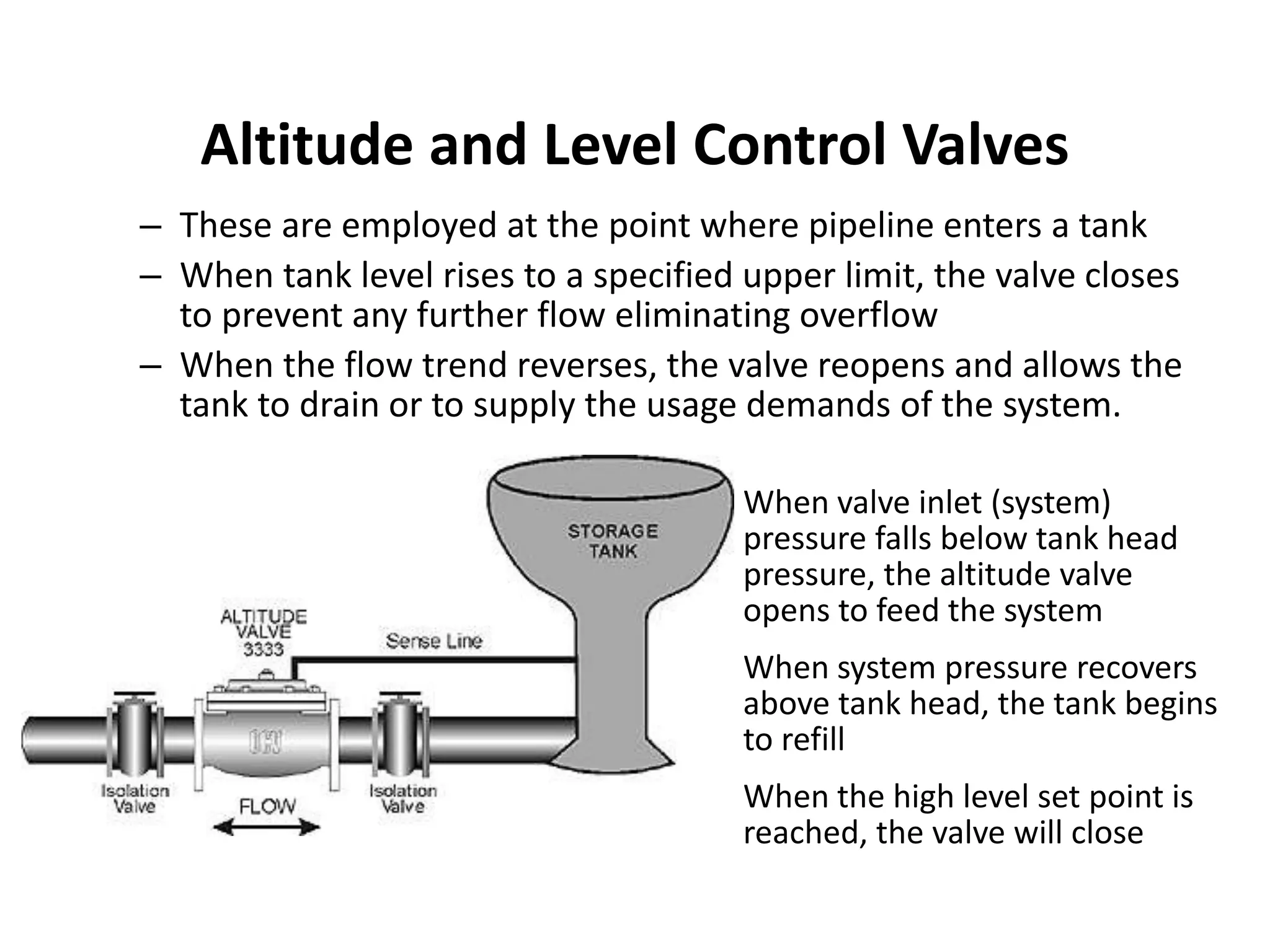
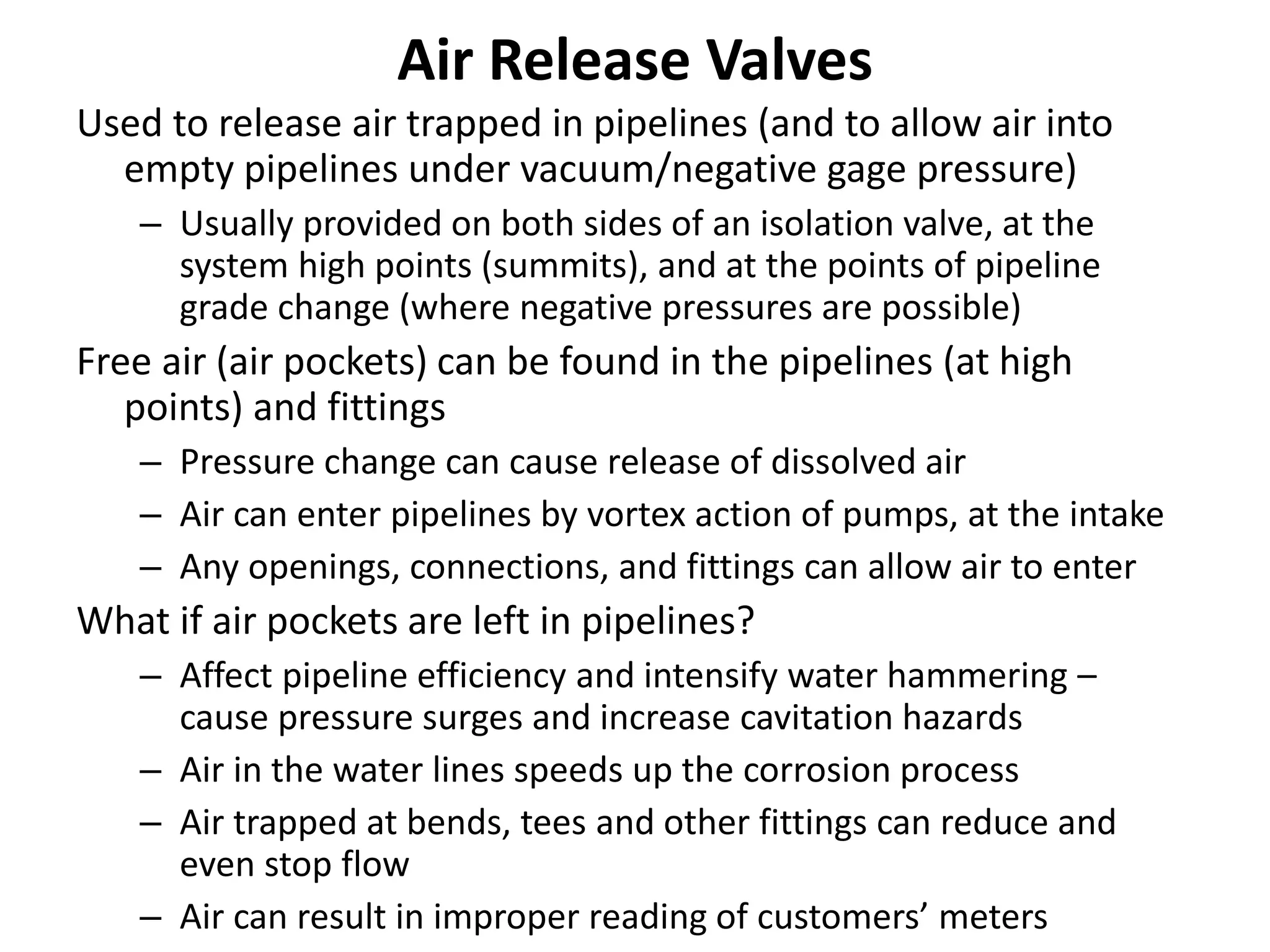
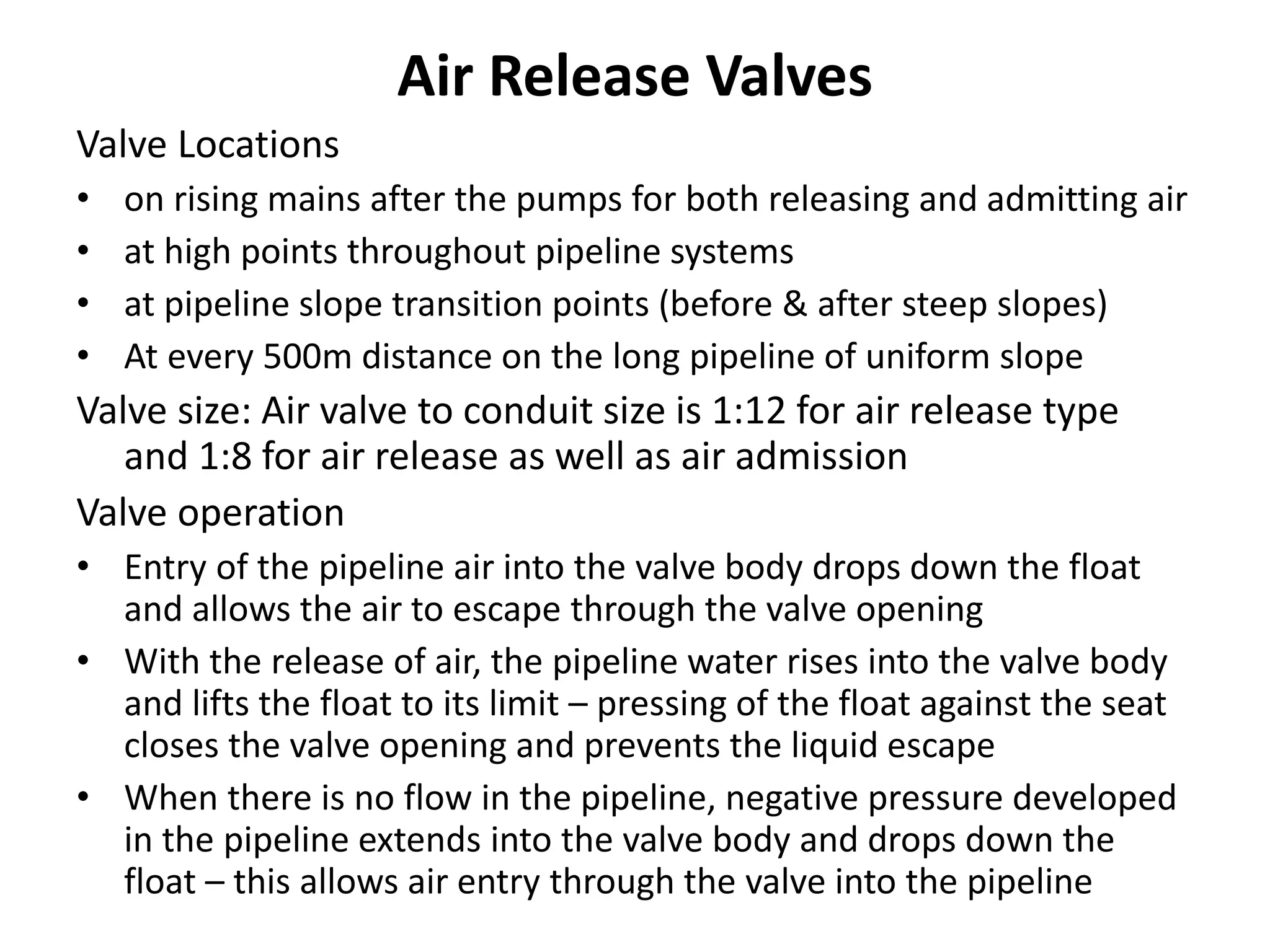
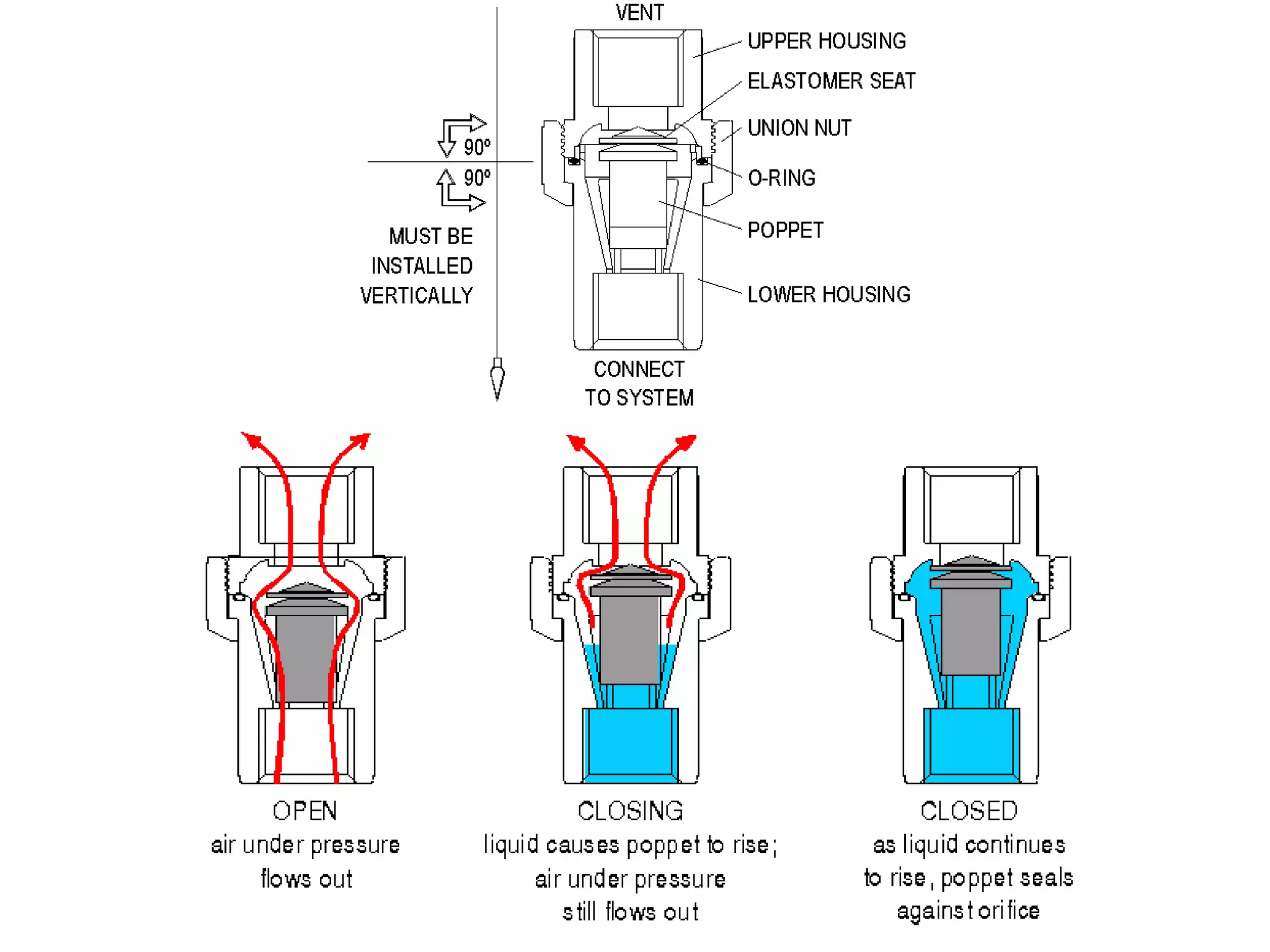
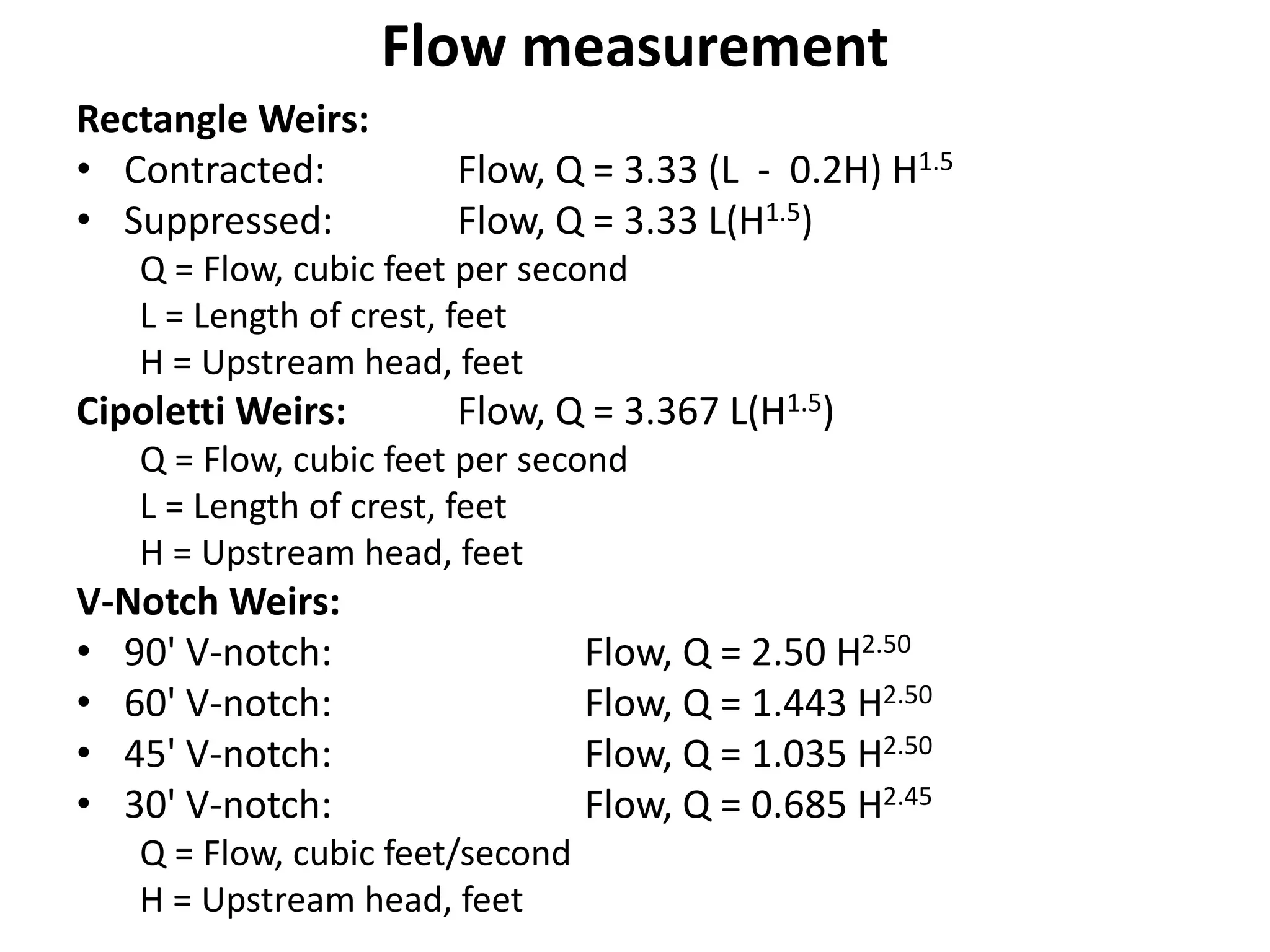
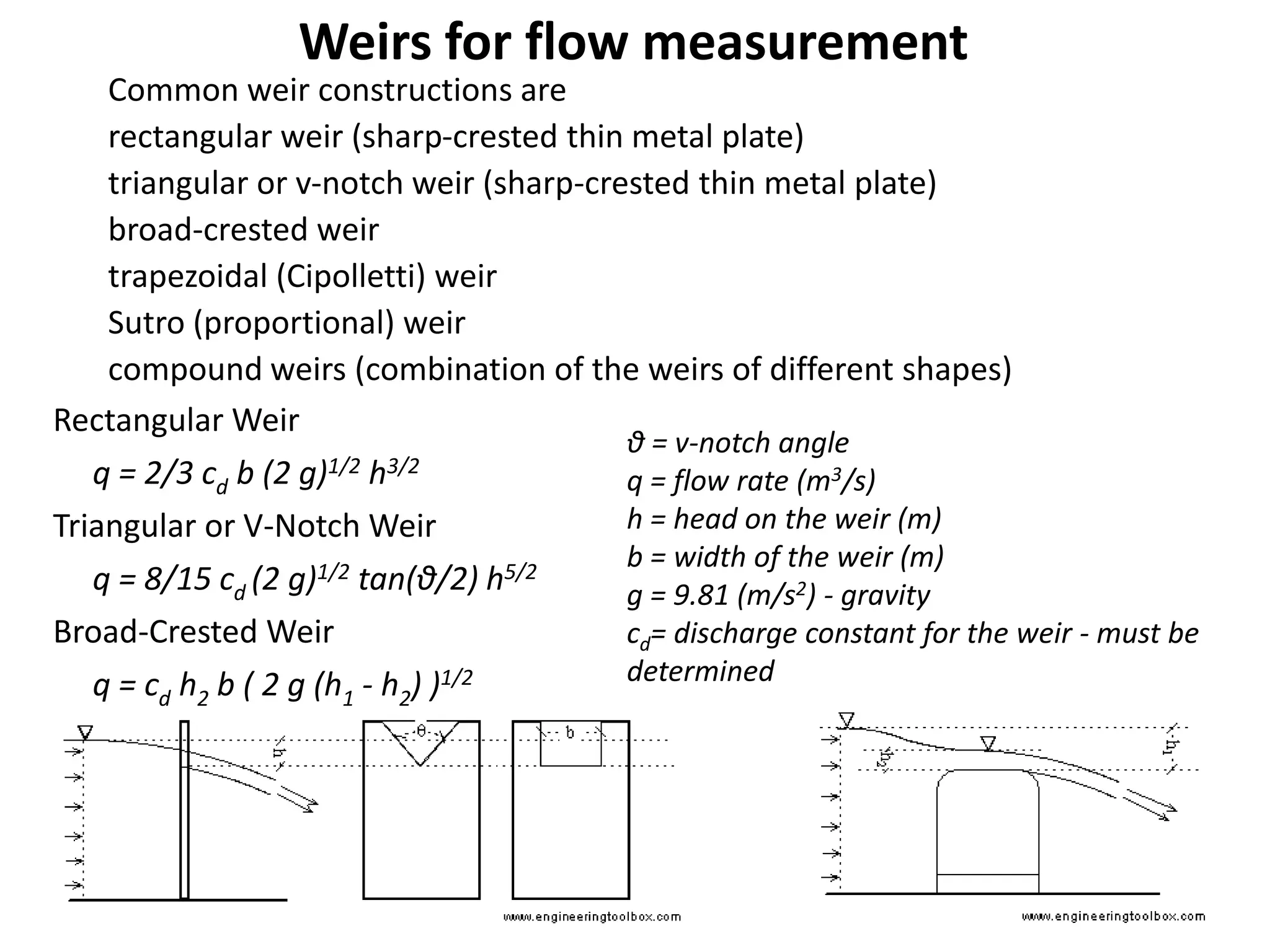
![Sluice gates for flow measurement
h = elevation height
ρ = density
v = flow velocity
According to Bernoulli Equation
1/2 ρ v1
2 + ρ g h1 = 1/2 ρ v2
2 + ρ g h2 -1
q = flow rate
A = flow area
b = width of the sluice
h1 = upstream height
h2 = downstream height
cd = discharge coefficient
ho = height sluice opening
According to the Continuity Equation:
q = v1 A1 = v2 A2 -2
q = v1 h1 b = v2 h2 b -3
1/2
12
2
1
12
21
2
1
1
2
21
2
]h[2 gv2
1
2
ghbhcq
hhfor
h
h
hhg
bhq
d
Combining equations -1 and -3
Used to measure flow rate in open channels
Pressures on the upstream and on the downstream are the same
cd is a function of opening height and vena
contracta height (cd = ho / h1 )
Its value is taken as ~ 0.61 for ho / h1 < 0.2](https://image.slidesharecdn.com/04-pipeline-channelhydraulics-150912060535-lva1-app6892/75/04-pipeline-channel-hydraulics-25-2048.jpg)
